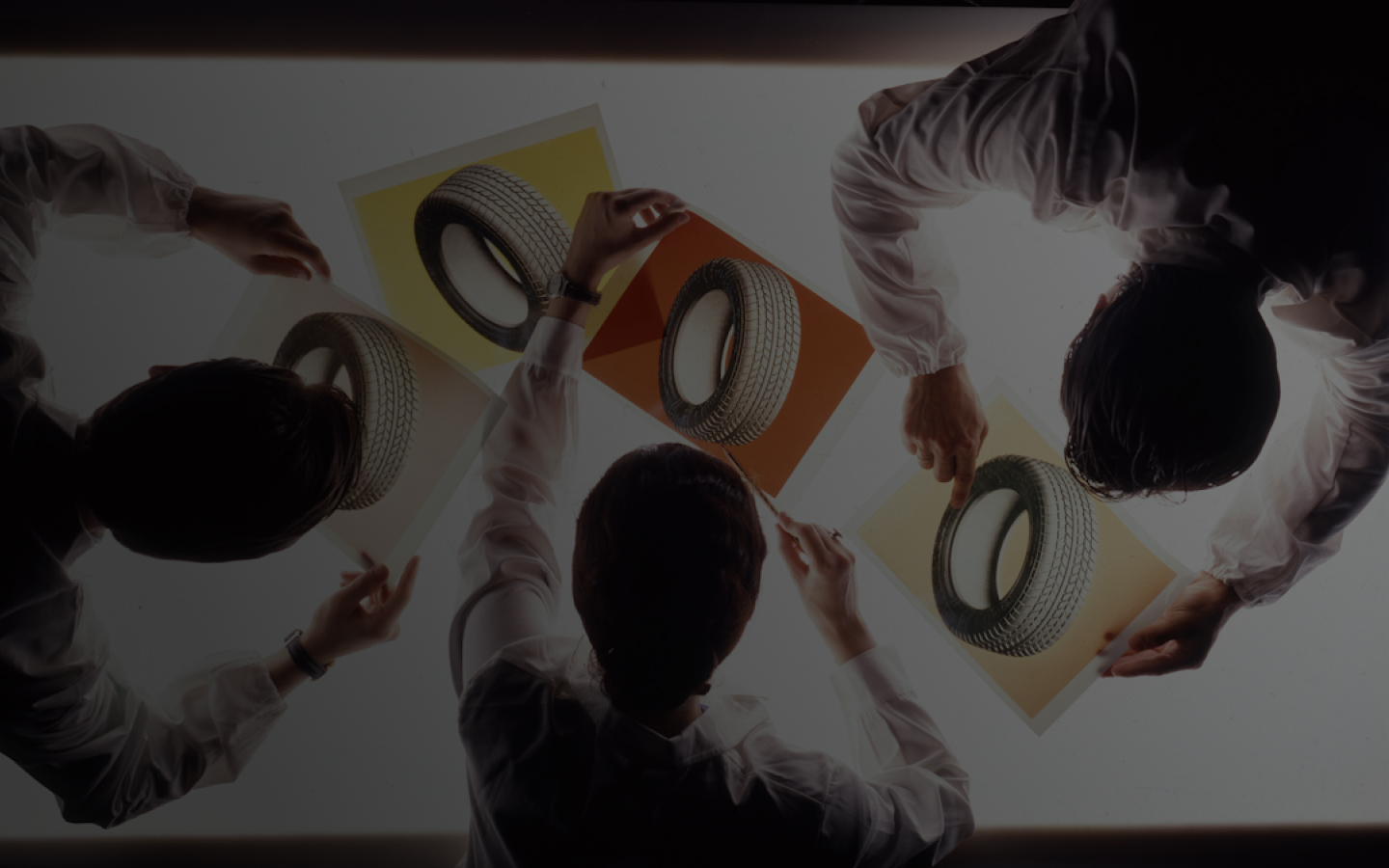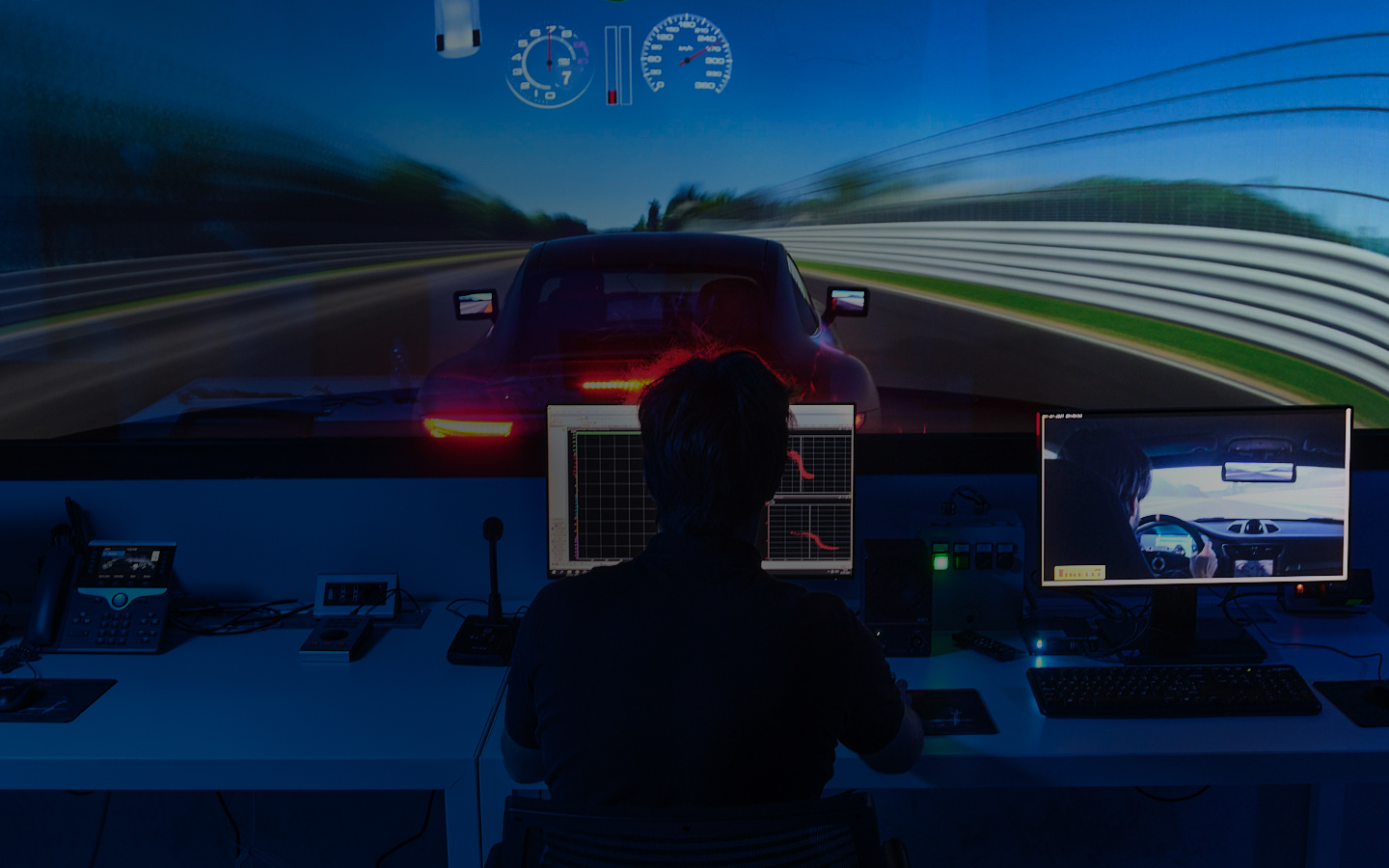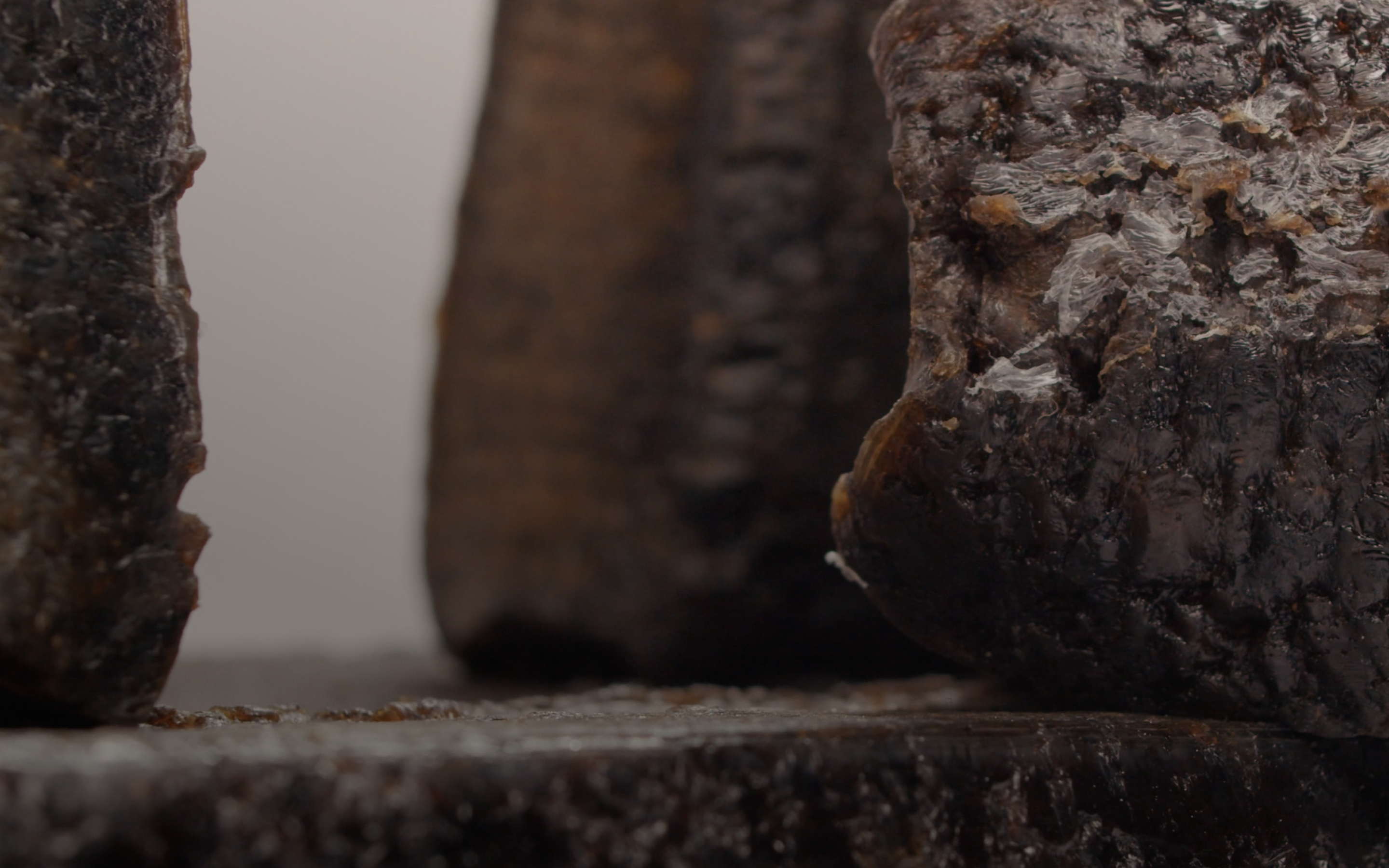ita

search
search
What would you like to see today?
A JOURNEY THROUGH TIME
Retracing the company’s history through the most significant events and innovations that have changed, and will change, the world


1872
On 28 January, engineer Giovanni Battista Pirelli founds his company in Milan, registering it as a limited partnership under the name of “G.B. Pirelli & C.” for the manufacture of articles in elastic rubber.
Deed of incorporation of Pirelli & C., 1872
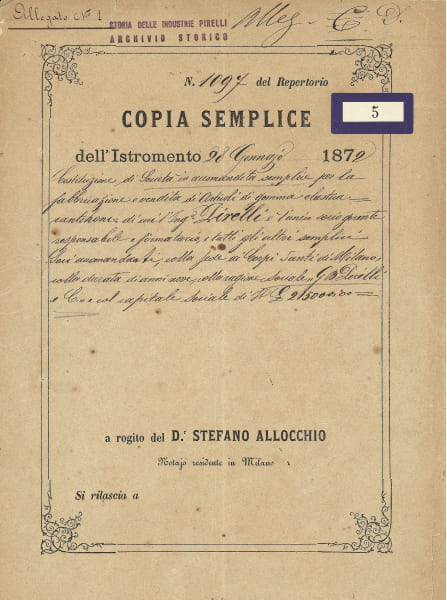
1873
On via Ponte Seveso, with a staff of only 40 labourers and 5 office workers, manufacture of the first technical articles begins, to include: belts, valves, mats, pipes, rubberised textiles.
The plant on via Ponte Seveso, 1873
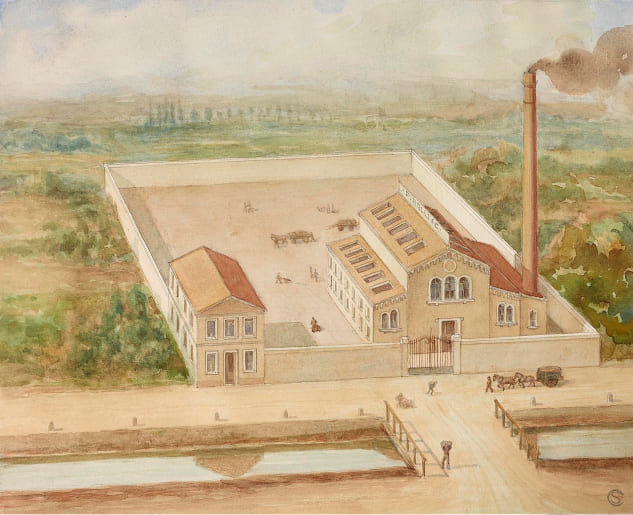
1875
Manufacture of so-called “diversified products” begins, and will continue over the following two years, to include: erasers, raincoats, hot-water bottles, the first lines of toys and play balls.
Advertisement for erasers, 1920
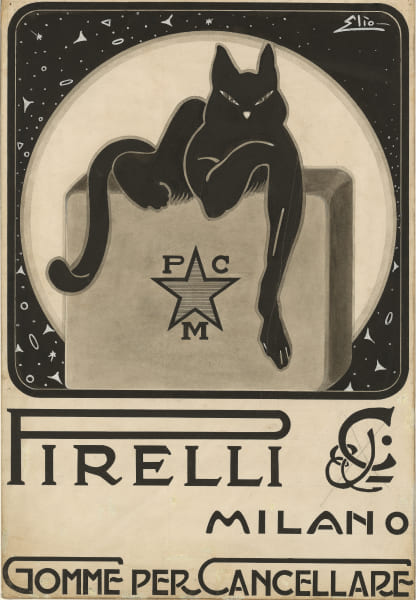
1879
Manufacture of telegraph cables insulated with India rubber, which up to then were exclusively supplied to Europe by British companies, begins and the manufacture of underwater electric cables starts soon after.
Manufacture of electric cables, from 1884 to 1921
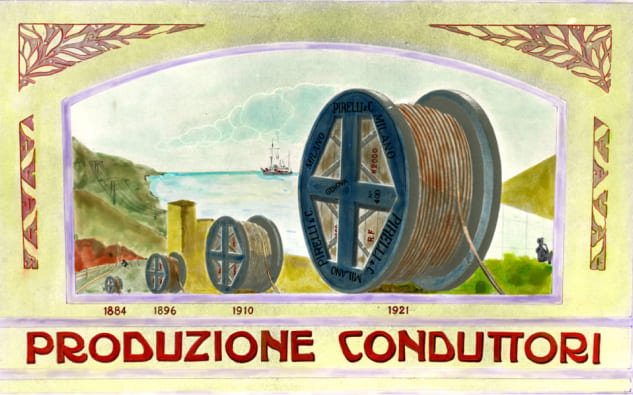
1880
The company introduces three separate production departments: technical articles, mass consumption articles, and cables, then known as “electric wires”. Manufacture of rubber swimming caps, gloves and mats begins.
Pirelli booth at the Milan National Exhibition of 1881
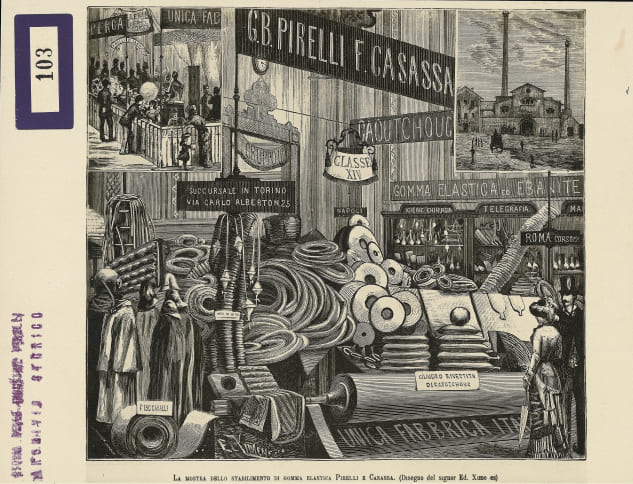
1883
Pirelli expands its production to include the elastic thread segment. On 26 December, the Teatro alla Scala opera house in Milan is illuminated by 2,450 electric bulbs: Edison uses Pirelli cables.
Publication on cables, 1906
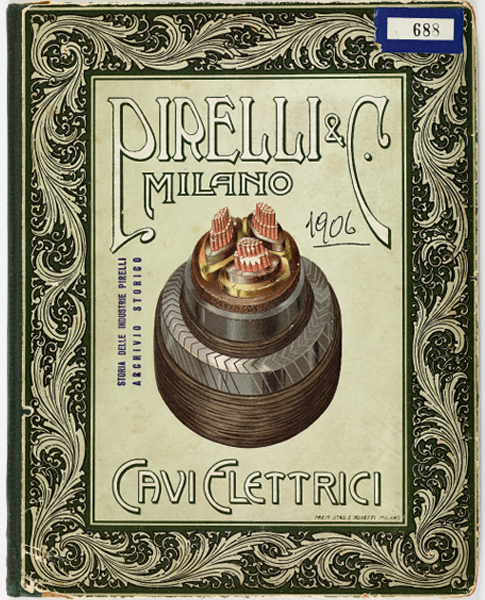
1886
Pirelli wins a contract by the Italian government for the manufacture and laying of underwater telegraph cables that will connect Italy's lesser islands; to complete the project, Pirelli builds a dedicated plant in La Spezia, while British shipyards in Sunderland begin works to build a cable-laying ship; Pirelli employs Emanuele Jona, who graduated from the Politecnico di Torino, as head of its Electricity Division and Technical Office.
The telegraph lines laid in the Mediterranean
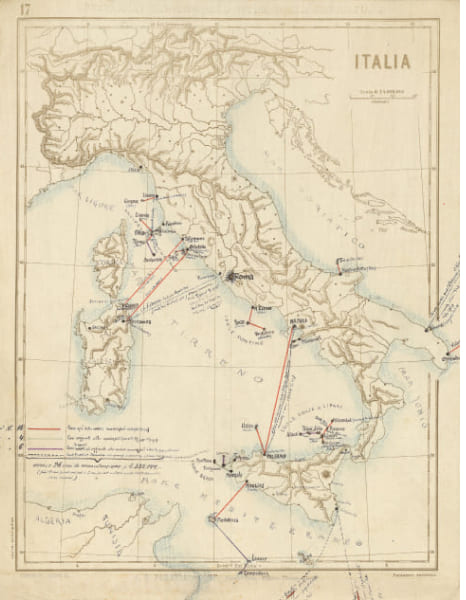
1887
Engineer Leopoldo Emanueli, who will become a specialist in underground cables, joins the company. The cable-laying ship “Città di Milano” is launched, and the laying of connecting cables with Italy's lesser isles is concluded. The following year, Pirelli wins a new contract with the Spanish government, to lay a cable between Jávea/Xàbia, on the Iberian mainland, and Ibiza.
The cable-laying ship “Città di Milano”, 1890
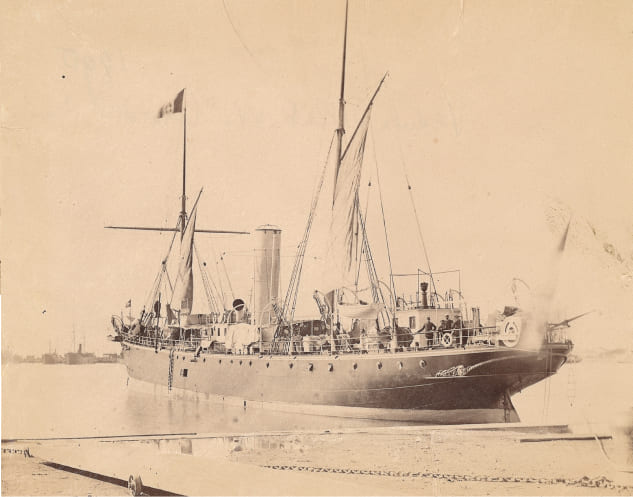
1890
In 1890, the first plant is expanded to the other side of the Sevesetto river, in an area called “Brusada”, where Pirelli starts manufacturing bicycle tyres: first models include the “Stella” and the “Tipo Milano” tyres, from 1894. These first patents lead to the manufacture of motorcycle tyres.
Motorcycle tyre catalogue
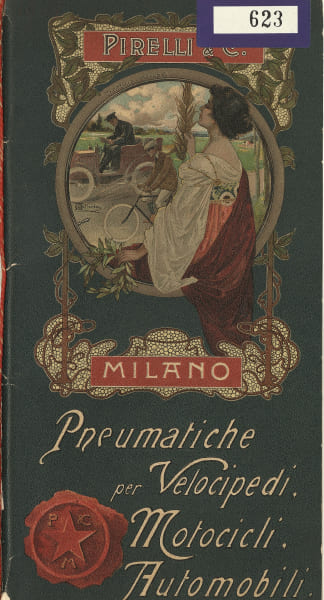
1894
Pirelli acquires a plant in Narni, Umbria region, which belonged to the “Society for the manufacture of items in India rubber, gutta percha and the like” and takes over the production of linoleum, establishing, four years later, the company Società del Linoleum.
The plant in Narni, 1895
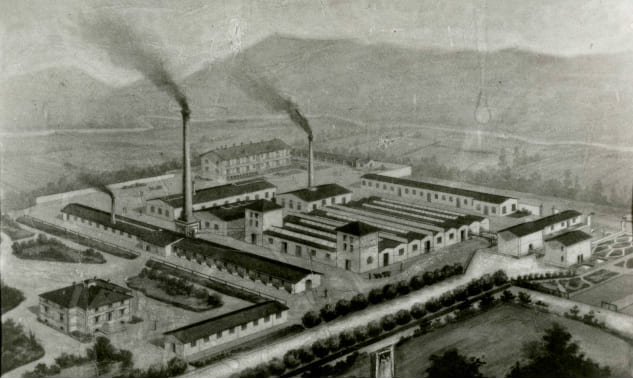
1895
Manufacture of underground cables for the provision of electric light in major cities begins; Berlin is among the first cities to place an order. Pirelli specialises in the manufacture of extra high voltage (EHV) cables to be laid across large bodies of water and in 1898 lays some EHV cables across the Nile.
Underwater cables across the Nile, 1898
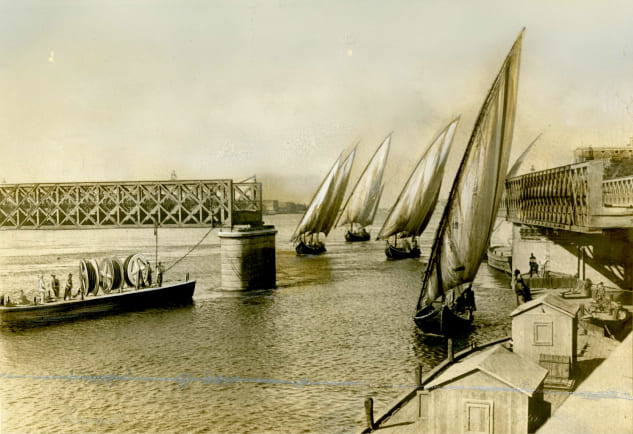
1872
The Italian Federation of the International Workers' Association is established in Italy, the first organised group affiliated to the Italian anarchic socialist movement; Yellowstone National Park is founded in the United States, the oldest national park in the world; excavation work on the Saint Gotthard tunnel begins.
First train throught the St Gotthard tunnel, Switzerland, 1880 (Photo by SSPL/Getty Images)
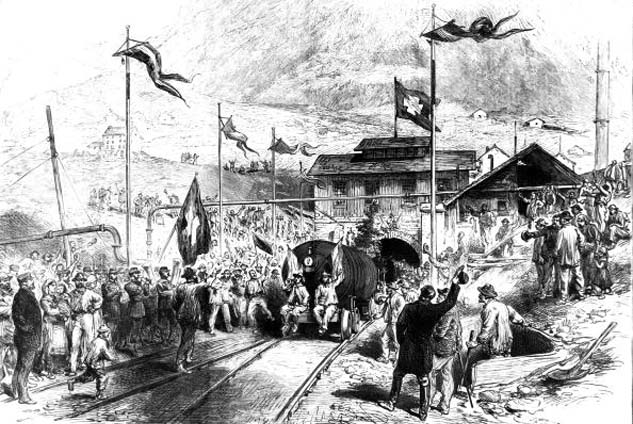
1873
Start of the “Long Depression”, which from Europe reaches the United States; scientist Camillo Golgi discovers neurons; the 11th Conference of Italian Scientists is held in Rome, during which occasion the Italian Society for the Advancement of Sciences is established.
1874
In Italy, draft legislation on free compulsory elementary education is rejected; French rule over Indochina begins with the Treaty of Saigon; Paris hosts the first official exhibition of the Impressionist movement.
1875
Construction of the Teatro Massimo begins in Palermo, to be concluded in 1891; the first performance of Georges Bizet's opera Carmen is held at the Opéra-Comique in Paris on 3 March, three months before the composer's death.
1876
The first issue of newspaper "Corriere della Sera", edited by Eugenio Torelli Viollier, hits the news-stands; the first “Historical Left” government is established in Italy, led by Agostino Depretis; General Custer's troops are defeated by the Sioux tribes led by Sitting Bull in the Battle of Big Horn; Alexander Graham Bell patents the telephone.
Alexander Graham Bell Making Telephone Call (Photo by © Hulton-Deutsch Collection/CORBIS/Corbis via Getty Images)
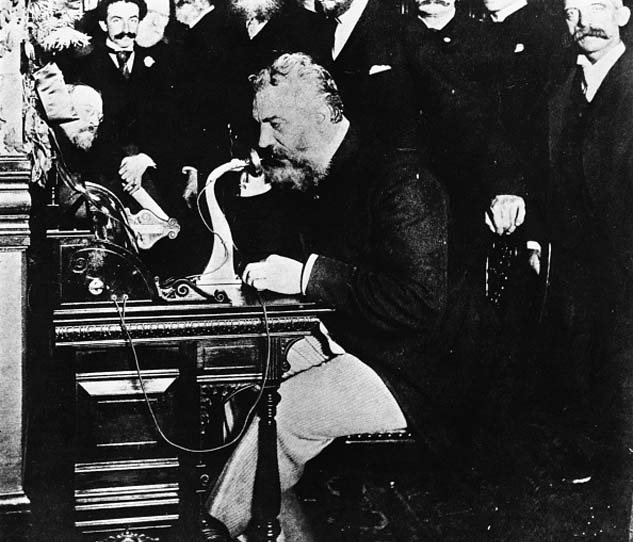
1877
Thomas Alva Edison invents the phonograph; the first electric lighting and telephone experiments take place in Milan; the Coppino Law is introduced in Italy, making elementary education free and compulsory for children aged from 6 to 9 years.
First electric lighting experiments in Milan, 1877
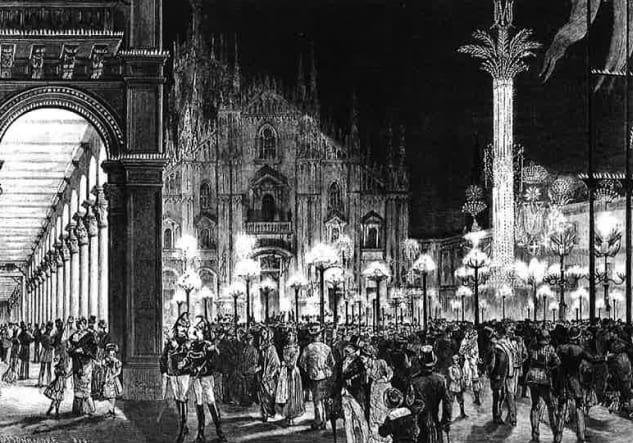
1879
The War of the Pacific, between Chile, Bolivia and Peru, breaks out in 1882; the great physicist and philosopher Albert Einstein is born in Ulm, Germany; in Italy, one of the most intense eruptions of Mount Etna occurs; the first electric railway opens in Berlin.
1880
People from Italy and Europe start migrating to America and South America; the first vaccines are developed, thanks to Louis Pasteur's experiments; Edison founds the Edison Illuminating Company, the first company in the world to generate and distribute electricity; works on the Panama Canal begin.
Incandescent Electric Lamp Image, courtesy US Department of Energy (Photo via Smith Collection/Gado/Getty Images)
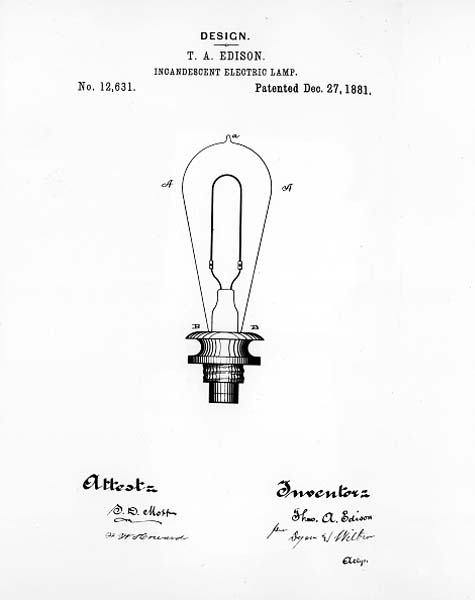
1883
The Brooklyn Bridge is inaugurated in New York; in Indonesia, the catastrophic volcanic eruption of Krakatoa, followed by a tsunami, registers the loudest explosion in the world, heard as far as Madagascar, and causes thousands of victims.
1884
The Greenwich Meridian is established; the first linotype, a machine that allows for automatic typesetting, is invented; “La France”, the first airship, completes a flight covering 8 km in 23 minutes.
1886
John Stith Pemberton invents Coca-Cola; Ernesto Breda founds the Ernesto Breda & Co. company, a mechanics and cast iron smelting plant.
1887
Emile Berliner invents the gramophone; first performance of Giuseppe Verdi's opera Otello at the Teatro alla Scala opera house; Italy and Great Britain sign an agreement recognising the status quo of the Mediterranean Sea, which will also later be signed by Austria-Hungary (24 March) and Spain (4 May).
1888
Social and political upheaval in Brazil lead to the establishment of the Republic of the United States of Brazil; China builds its first railroad; John Boyd Dunlop invents the first modern pneumatic tyre; a suspension in the negotiations to agree customs rates between the Italian and French governments engenders the first “commercial war” between the two countries, which will heavily hurt the agricultural economy of Southern Italy; the mining and chemical company Montecatini Società Generale per l'Industria Mineraria e Chimica opens its first plant in the Lombardy region.
1889
On the 100th anniversary of the French Revolution, Paris hosts the “Exposition Universelle”, for which occasion the Eiffel Tower is built; Viennese archaeologist Emanuel Löwy establishes the first professorship in Archaeology at the Sapienza University of Rome.
Universal Exposition 1889 (Photo by Fine Art Images/Heritage Images via Getty Images)
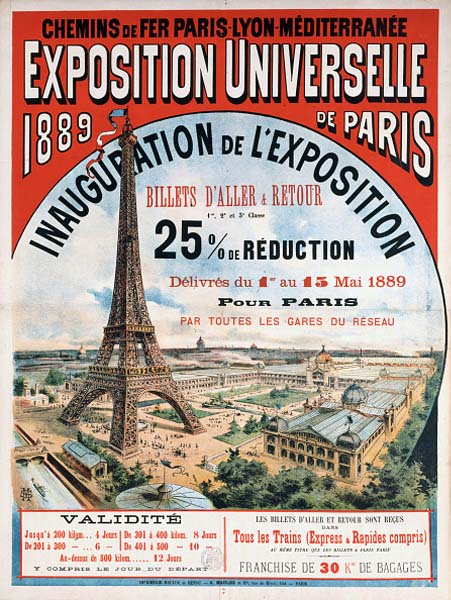
1890
American President Benjamin Harrison signs the Sherman Antitrust Act, the first antitrust law in the world; Labour Day, on 1 May, becomes a public holiday in Italy, to commemorate the fight for workers' rights and the reduction of the working day.
1894
The first Sino-Japanese War breaks out (1894-98); in France, the Dreyfus Affair, a miscarriage of justice in connection to military espionage (concluded in 1906), creates controversy; The Yellow Kid, the first comic strip that gave rise to the modern comics industry, is published in the United States.
1895
The Lumière brothers hold their first cinema screening; establishment of the Nobel Prize; Guglielmo Marconi carries out the first experiments in radio transmission.
Poster for the Lumiere brothers cinematograph, 1895, (Photo by Leemage/Corbis via Getty Images)
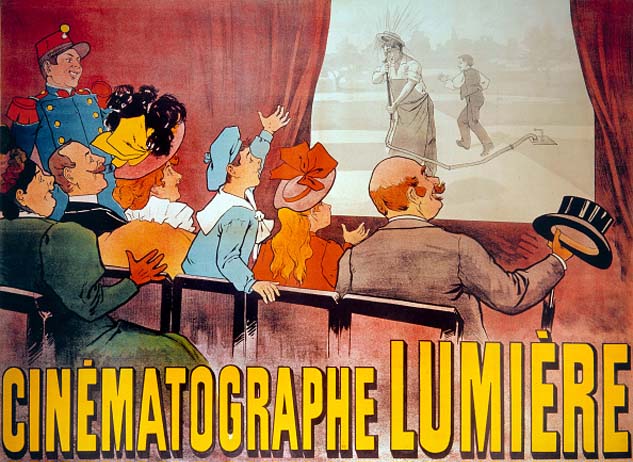
1898
The Philippines declare their independence from Spain; Enzo Ferrari is born; the United States occupies Cuba for the first time.
1901
Pirelli patents and starts manufacturing "Ercole" tyres for cars. Patents for enhanced tyre beads, as well as for puncture, tear and skid resistance improvements are filed in this period.
Advertisement sketch for Pirelli tyres, 1910-15
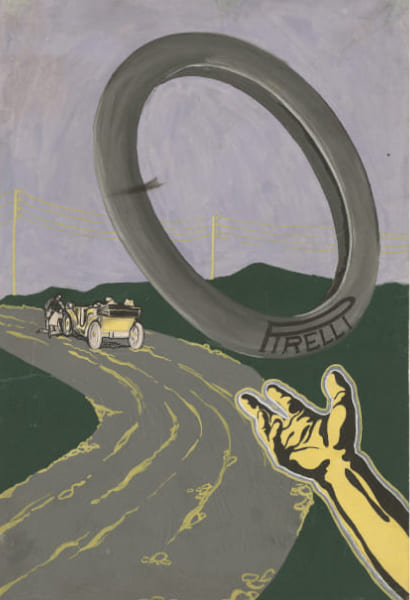
1902
In Vilanova i la Geltrù, near Barcelona in Spain, the first Pirelli Group's international plant is built, for the manufacture of electric cables and various rubber articles.
View of the plant in Vilanova i la Geltrù, 1922
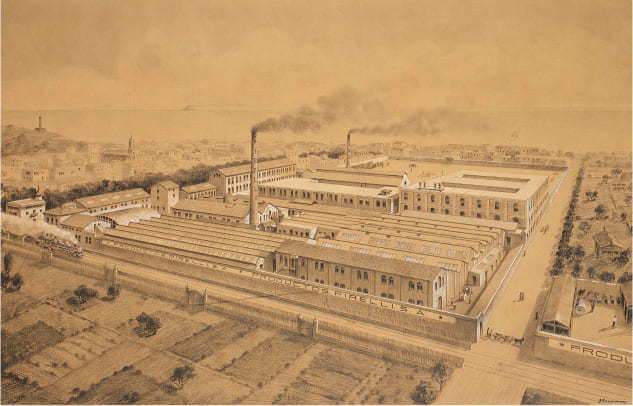
1904
Piero Pirelli travels to the United States to oversee the attendance at the Saint Louis Exposition and begins negotiations for the supply of cables over the Niagara Falls. Alberto Pirelli and Emanuele Jona attend the International Electrical Congress and announce significant novelties in the field of extra-high voltage cables. Alberto Pirelli continues the journey and visits the India rubber plantations in the Amazon.
Attendance at the Saint Louis Exposition, 1904
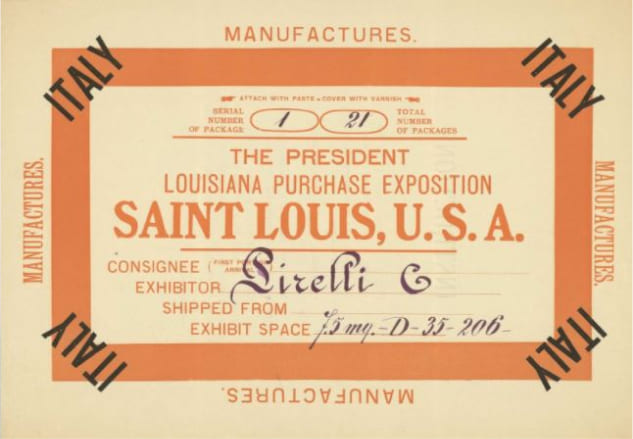
1906
A parcel of land extending to 115 hectares (280 acres) is purchased in the Bicocca area of Milan, between the municipalities of Niguarda and Greco Milanese, on which, the following year, works to build a new plant begin. The company attends the Milan International Exhibition: in its pavilion, a giant picture entitled Pirelli employees leaving the plant on via Ponte Seveso is on display, taken by photographer and film director Luca Comerio.
The Pirelli pavilion at the Milan International Exhibition, 1906
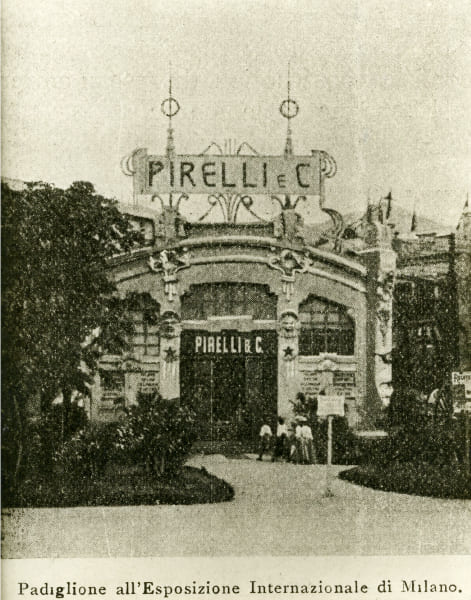
1907
The Peking to Paris Rally takes place, the first international competition in automotive history. It's won by Prince Scipione Borghese in the Itala car, equipped with Pirelli tyres. Manufacture of the “Neroferrato”, a new tyre that uses carbon black in its compound, to make it sturdier, begins. The brand “P lunga” is established, a logotype still used by the Group today.
Publication on the Peking to Paris Rally, 1907
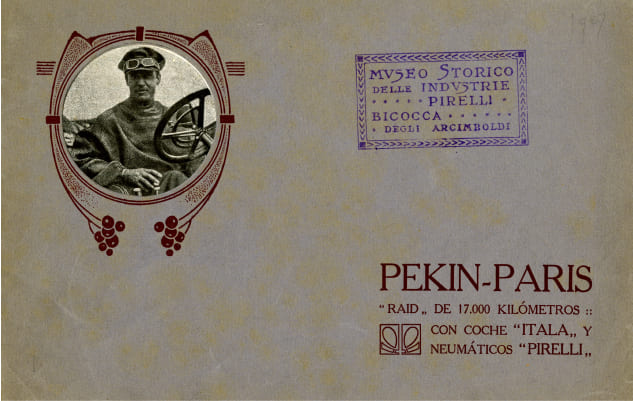
1909
Giovanni Battista Pirelli is appointed Senator for life. The subsidiary Pirelli Ltd is founded in London, supplying the British Empire with all products made by the Group. At the first Giro d'Italia, 30 out of 50 cyclists who made it at the finish line used Pirelli tyres. Manufacture of rubberised textiles for aircraft expands. Piero Pirelli becomes president of the “Milan Cricket and Football Club”, a role he will hold until 1928. He urged the construction, in 1926, of the San Siro stadium in Milan.
Advertising postcard, 1909
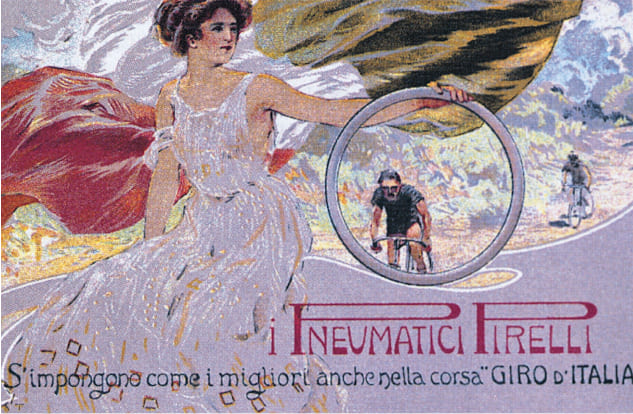
1913
The Societé Française Pirelli is established in Paris, for commercial purposes and aiming to engage the brand in major sports events: the first French Grand Prix is won by Georges Boillot with a Peugeot featuring Pirelli tyres. In the UK, in association with General Electric, the Pirelli General Cable Work Ltd company opens in Southampton.
Georges Boillot at the Grand Prix de France, 1913
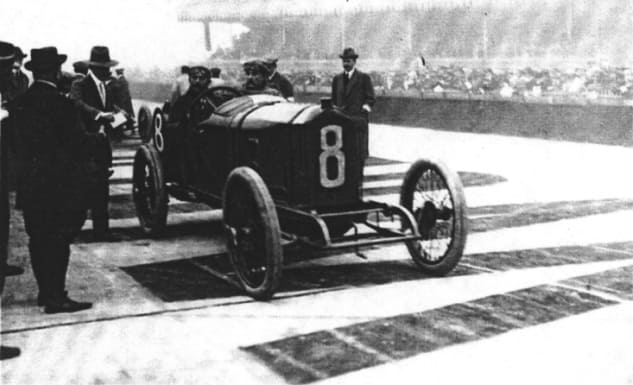
1915
The start of World War I generates substantial orders from the army and, subsequently, increases the manufacture of aviation tyres.
A Fiat CR20 biplane with Pirelli tyres, 1920s
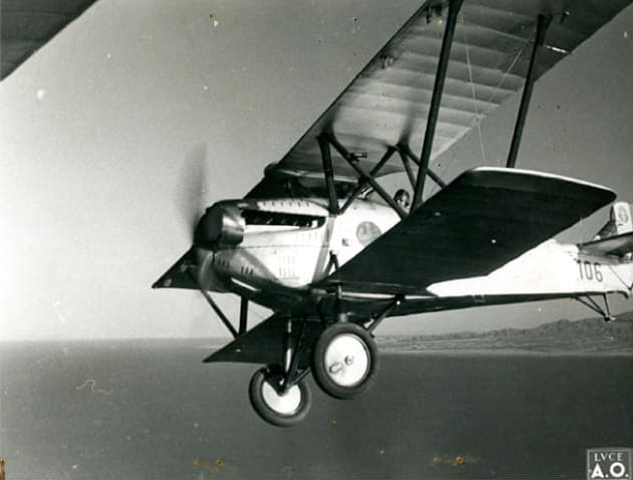
1916
In Vercurago, province of Lecco, a plant dedicated to the manufacture of ingredients for the compounding of rubber is built.
The plant in Vercurago, 1922
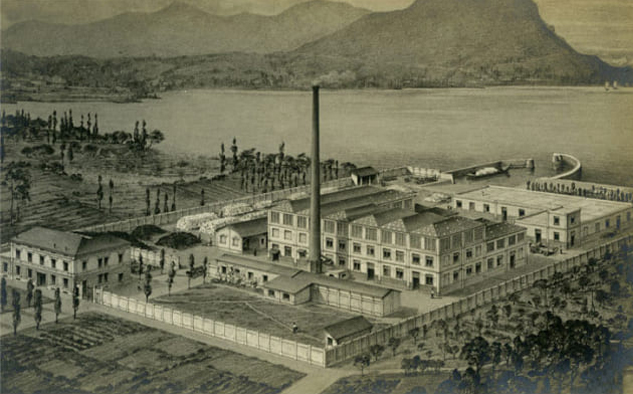
1917
Pirelli S.A. Platense, in Buenos Aires, becomes Pirelli's first international subsidiary and, from 1920, begins manufacturing electric cables and successively other rubber products, too. At the same time, in Spain, Pirelli starts manufacturing car tyres.
The Mendoza branch of Pirelli SA Platense, 1927
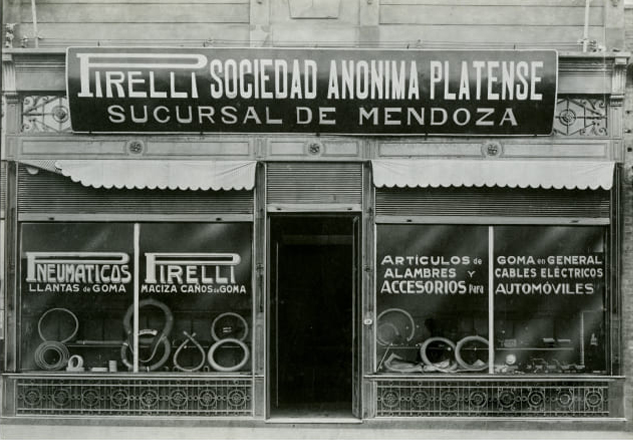
1919
The cable-laying ship “Città di Milano” sinks in Filicudi, Sicily, causing the death of 26 people (including chief electrician Emanuele Jona and engineer Leopoldo Emanueli). The latter is succeeded in the company by his son Luigi. In the same year, two India rubber plantations in Java and Singapore are acquired.
The Pirelli’s engineer Emanuele Jona
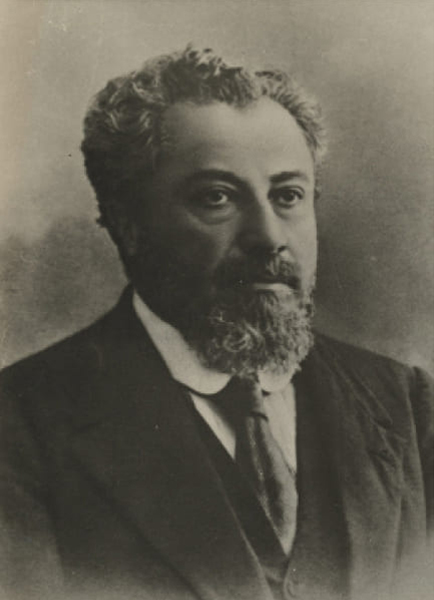
1901
Suppression of the Boxer Rebellion, an uprising against foreign colonial rule, in China; in Canada, Guglielmo Marconi receives the first transatlantic message.
Guglielmo Marconi, 1920 (Photo by © Hulton-Deutsch Collection/CORBIS/Corbis via Getty Images)
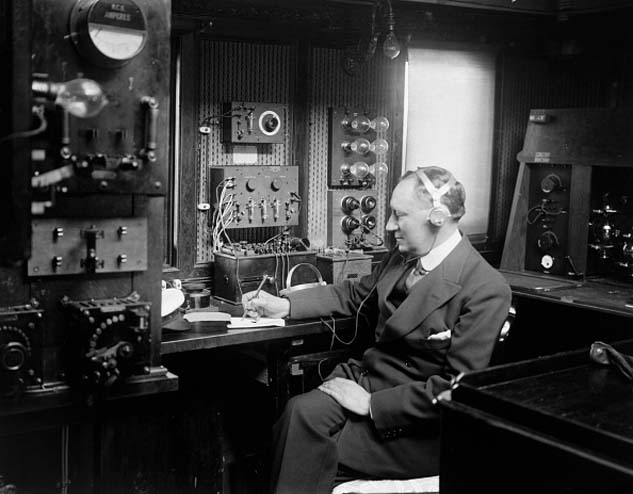
1902
The Liberty style is officially established; end of the Second Boer War; the Saint Mark's Bell tower collapses in Venice; Cadillac is founded in Detroit.
1904
The Russo-Japanese War, fought by the Russian Empire to gain control of Manchuria and Korea, begins (1904-1905); in 1905, the New York subway is inaugurated; works on the railway line between Saint Petersburg and Vladivostok end, completing the Trans-Siberian railroad, which crosses Eastern Europe and North Asia over Russian territory.
Trans-Siberian Railway, 1903 (Photo by Hulton Archive/Getty Images)
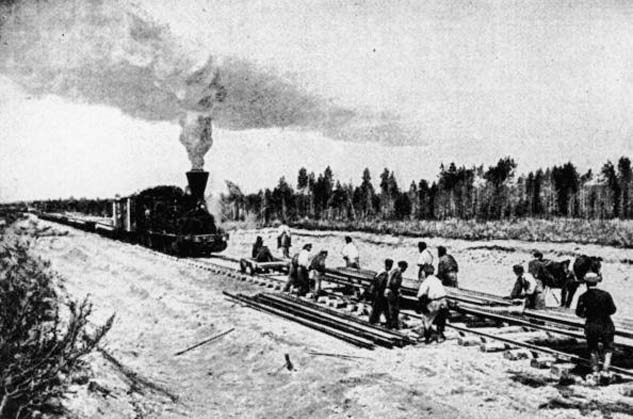
1906
A major earthquake, followed by a fire, strikes San Francisco, causing thousands of victims; in Chile, an 8.2 magnitude earthquake causes the death of 20,000 people; second occupation of Cuba by the United States.
1907
The Peasants' Revolt breaks out in Romania; Russia and Britain sign the Anglo-Russian Convention, an agreement stipulating the apportionment of Persia's areas of interest, the territorial integrity of Tibet and the British protectorate in Afghanistan; for the first time in the world, women can vote and stand in parliament elections in Finland.
1909
Poet Filippo Tommaso Marinetti publishes, in Paris, “The Futurist Manifesto”; American troops leave Cuba; the Bosnian crisis ends with the annexation of Bosnia and Herzegovina into Austria-Hungary; the first Giro d’Italia is launched.
1910
In Albania, uprisings against the government's new centralisation policies break out; George V is crowned King of the United Kingdom and the British Dominions and Emperor of India; the Portugal revolution leads to the proclamation of the First Portuguese Republic; Japan annexes Korea; the Mexican Revolution, fought to end the military dictatorship of general and president Porfirio Diaz, begins; the works of Kandinsky and Mondrian lead to the establishment of Abstract art.
1911
Explorer Roald Amundsen is the first to reach the South Pole; the Italo-Turkish war begins, which will see Italy conquering Libya; New Delhi becomes the capital of British India; chemist Ernest Rutherford describes the atomic model.
Norwegian Explorer Roald Amundsen at the South Pole, 1911 (Bettmann/Getty Images)
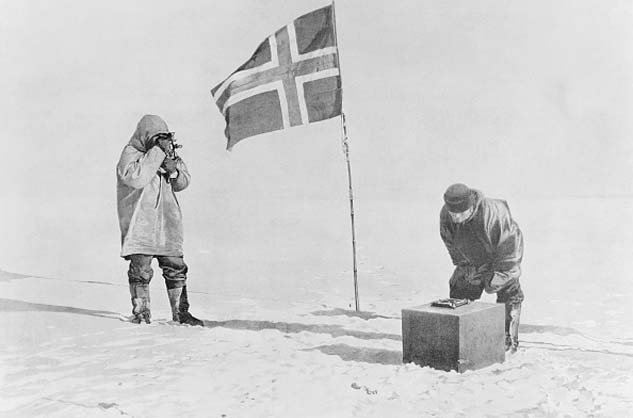
1912
End of the Chinese Empire and beginning of the Republic of China; the Titanic, the largest transatlantic ship ever built, sinks during its inaugural journey, resulting in 1,500 casualties; Morocco becomes a French protectorate; the First Balkan War begins; Alfred Lothar Wegener develops the theory of continental drift.
1913
The Treaty of Bucharest marks the end of the Second Balkan War; the first women's rights events begin to attract people's attention; in Detroit, Ford Motor Company introduces the first assembly line.
1915
Italy officially joins France and Great Britain as an ally in World War I; a 7 Richter scale earthquake hits the Abruzzo region, destroying several areas and causing 30,000 casualties; the German submarine U-20 sinks the British ocean liner RMS Lusitania.
1916
The Battle of the Somme starts, a series of French and British offensive actions attempting to breach the German lines; Albert Einstein publishes the “Theory of general relativity”.
A detail from Albert Einstein's General Theory of Relativity, 1925 (Photo by David Silverman/Getty Images)
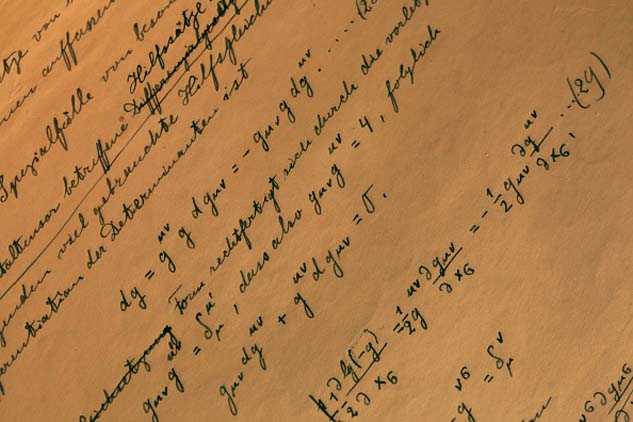
1917
The United States enters World War I, joining the Allies; start of the Bolshevik Revolution, which overthrows the Russian Empire and establishes, at first, the Russian Soviet Federative Socialist Republic; Finland declares its independence from the Russian Empire.
1919
The Treaty of Versailles is signed, which officially marks the end of World War I; in Europe, the workers' uprising termed “Biennio Rosso” (Two red years) begins; in Milan, Benito Mussolini founds the political movement named "Fasci Italiani di Combattimento" (Italian fighting bands); the Weimar Constitution is established, the first democratic statute in German history, which governs Germany from the end of World War I to the rise of Hitler in 1933; in India, Gandhi leads a campaign in civil disobedience; in the United States, the Volstead Act is enforced, better known as the Prohibition Act, which prohibits the manufacture and sale of alcoholic beverages.
1920
Thanks to an agreement between Pirelli & C. and the Istituto Autonomo Case Popolari (Autonomous Institute for Public Housing), the Borgo Pirelli (Pirelli Village) is established, an area of which is allocated for the accommodation of Pirelli employees.
The Borgo Pirelli, 1922
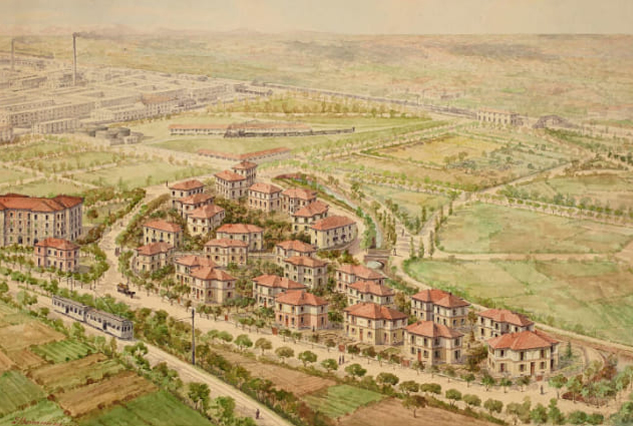
1922
Pirelli is 50 years old. Celebratory events include the inauguration of the “Museo della Gomma delle Industrie Pirelli” (the Pirelli Industries' Museum of Rubber), opened in the fifteenth-century-old Bicocca degli Arcimboldi mansion, now part of the Group's headquarters and representative office. In the same year, the Cord car tyre is launched, in which a weftless tyre cord fabric replaces the traditional fabric.
"Il Museo delle Industrie Pirelli, 1922"
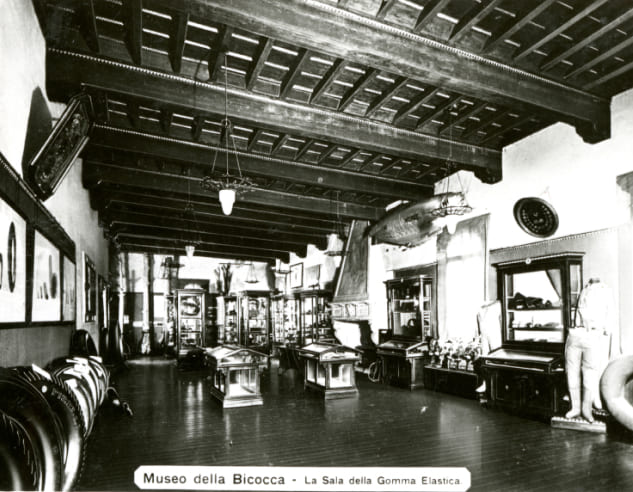
1924
Successful experiments with the first oil-filled cable for the transmission of extra high voltage power, designed by engineer Luigi Emanueli, are carried out at the electric substation of Brugherio, on the outskirts of Milan; the patent is filed the following year with the United States Patent and Trademark Office. At the same time, the "Cord Superflex" (low-pressure, more convenient and flexible than previous tyres) is launched on the tyre market. The Neumaticos National Pirelli is founded in Manresa, Spain.
Oil-filled cable, 1924

1925
Gastone Brilli Peri wins the Monza Italian Grand Prix and the world Manufacturers' Championship with an Alfa Romeo equipped with Pirelli tyres. 5,150 km of transatlantic underwater telegraph cable is laid in the Atlantic Ocean to connect Italy and the United States.
Gastone Brilli Peri with Alfa Romeo, 1925
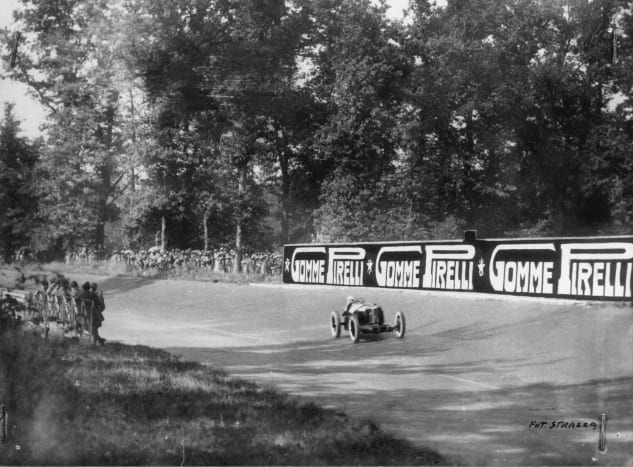
1927
The "Stella Bianca" tyre is launched on the market, featuring tread reinforced with trapezoidal blocks, to avoid tears at high speeds: it will become the most popular tyre between 1930 and 1950. As shown by Luca Comerio's footage, on 20 June King Victor Emmanuel III of Italy visits the Pirelli's Bicocca plant. In the same year, two oil-filled cables for the transmission of 132,000 V power are laid, setting a record in terms of highest voltage.
Mario Bertoglio, advertisement for Stella Bianca tyres, 1931-35

1928
Pirelli Ltd builds a plant in Burton-on-Trent, in the United Kingdom, for the manufacture of vehicle rubber tyres and rubber footwear.
1929
Pirelli enters the New York's Stock Exchange Market and begins manufacturing insulated, power and telecommunication cables in Brazil. On 23 July HRH Prince Edward of Wales visits the new tyre plant in Burton-on-Trent.
Entry to the New York Stock Exchange, 1929
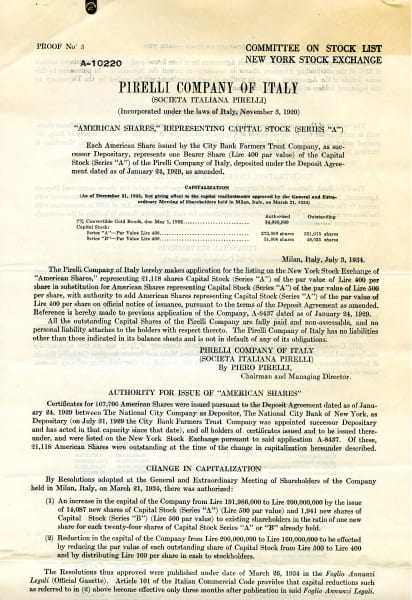
1931
A new kind of giant tyre, the "Sigillo Verde", is launched, and the international coalition for elastic thread manufacturers, IRTA (International Rubber Thread Association), based in Cologne, and of which Pirelli is a member, is established.
Michael Pavel Engelmann, advertisement for Sigillo Verde tyres, 1953
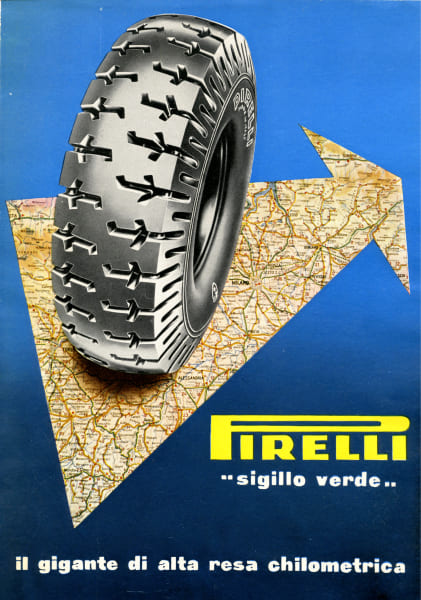
1932
Giovanni Battista Pirelli passes away on 20 October. His sons Piero and Alberto take on the roles of President and Vice President respectively, as well as of CEOs.
Piero and Alberto Pirelli on a Fiat 24HP, 1907
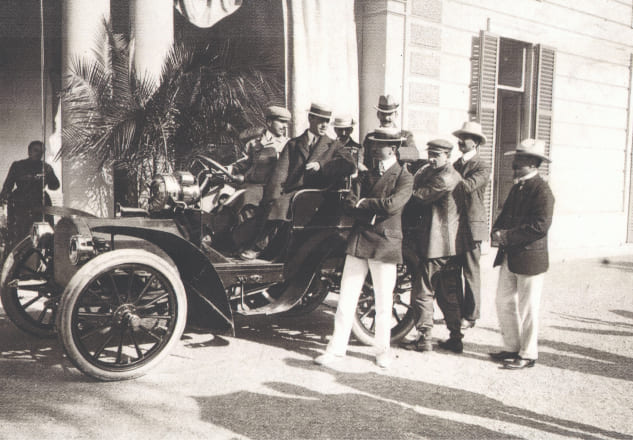
1933
Dunlop and US Rubber sign an agreement for the shared exploitation of various patents for the processing of latex, such as the one used to manufacture round section thread. Pirelli starts manufacturing foam rubber. Alfa Romeo cars with Pirelli tyres dominate racing events: from the Mille Miglia to the Monza Grand Prix to the Trofeo Motociclistico Internazionale motorcycle race.
Advertisement for foam rubber, 1952
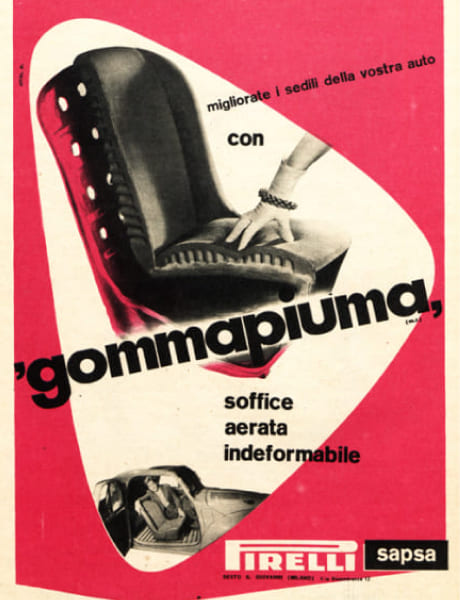
1935
A new “process for the manufacture of carbon black”, suitable for use in the tyre industry, is introduced. The Vercurago plant, in Lecco, is expanded, with the acquisition of an area of about 10,000 sqm. Cultivation trials of the Guayule shrub, already used in Mexico and Florida as a substitute source for natural rubber, are carried out in Italy. An idea by Giuseppe Vigorelli, sales director for Pirelli tyres in the Lombardy region and keen cyclist, prompts the construction of the Vigorelli velodrome in Milan.
The Vigorelli velodrome, 1947
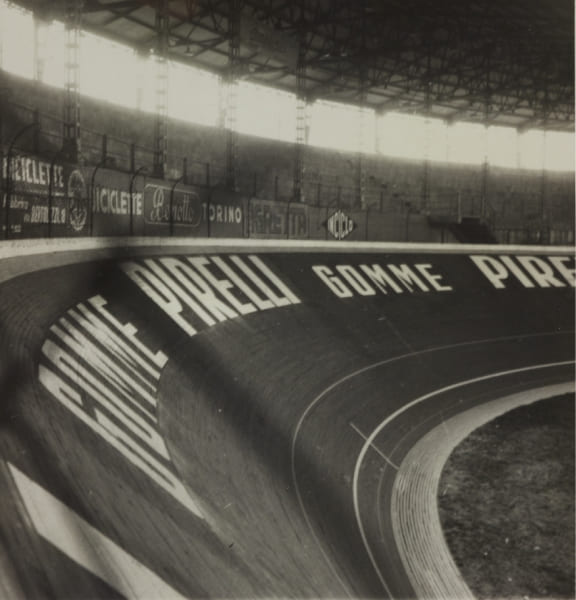
1937
On 8 October, Pirelli and IRI (Istituto per la Ricostruzione Industriale, the Institute for industrial reconstruction) establish an Institute for the study of synthetic rubber, whose labs are managed by Giulio Natta, future winner of the Nobel Prize in Chemistry. Two plants for the manufacture of synthetic rubber are opened in 1939 in Ferrara and Terni. Similarly, research on how rayon could replace cotton is carried out in the field of textile materials.
Chemical lab at the Pirelli Bicocca plant, 1940s
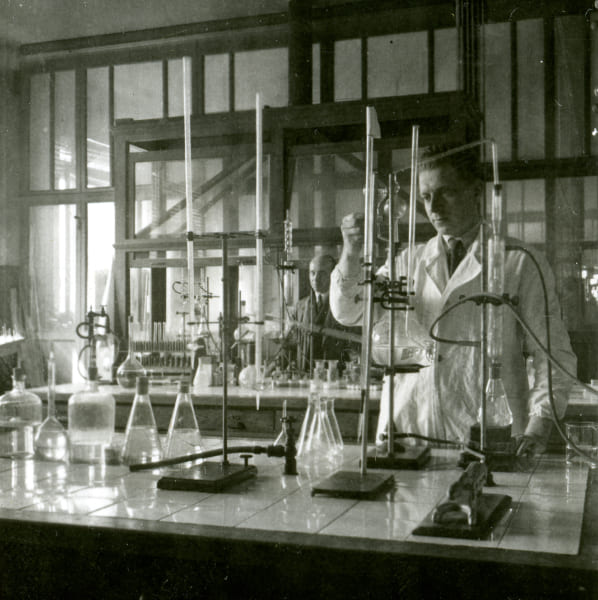
1938
The Società Tessili Artificiali (Society for artificial textiles), based in Pizzighettone (Cremona), for the progressive replacement of cotton with rayon in tyre manufacturing, is established. Gino Bartali wins the Tour de France with a Legnano bike equipped with Pirelli tyres.
The plant at Pizzighettone, photo by Aldo Ballo, 1958
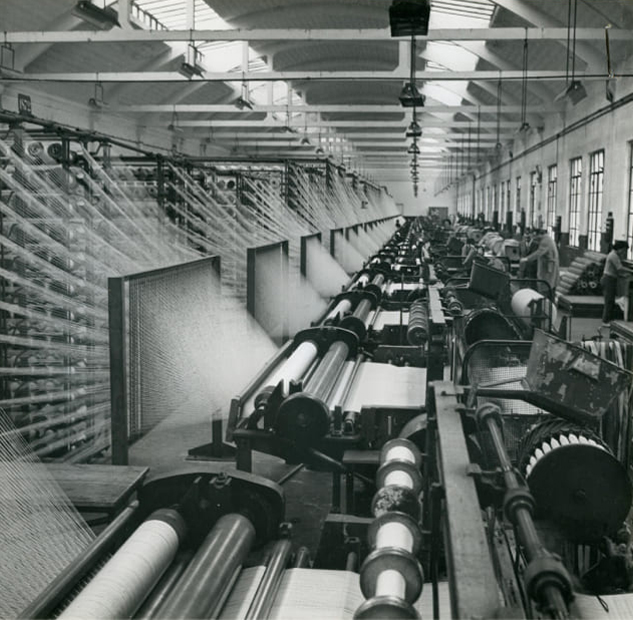
1943
The plant on via Ponte Seveso is heavily damaged during the bombing of Milan – the Pirelli Tower will be built on its location. Preliminary studies and trials of products made in the new “leatherette” material, synthetic leather made from vinyl resins, especially intriguing for its uses in factories and cars' bodyworks (at the beginning of 1947, Pirelli SAPSA will begin to manufacture it), are carried out.
The bombed plant on via Ponte Seveso, 1943
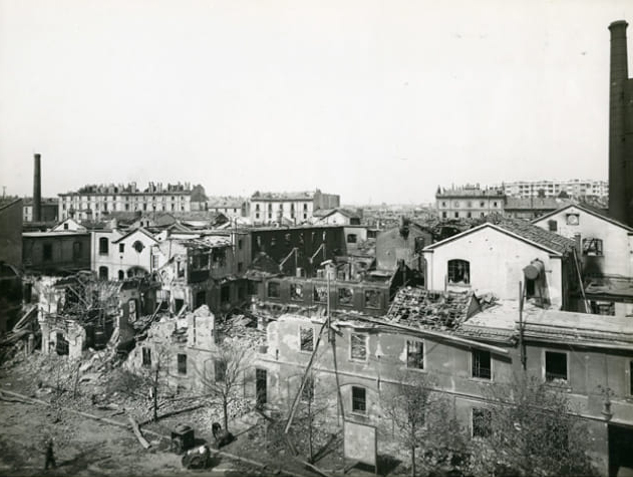
1945
Pirelli, just like all other big companies in Northern Italy and as demanded by the Allied Military Government, undergoes investigation and appoints as its representatives the company's executive director Cesare Merzagora and, as Assistant Commissioner, engineer Luigi Rossari, executive director of cable production.
Cesare Merzagora on the Pirelli Tower during construction, 1957
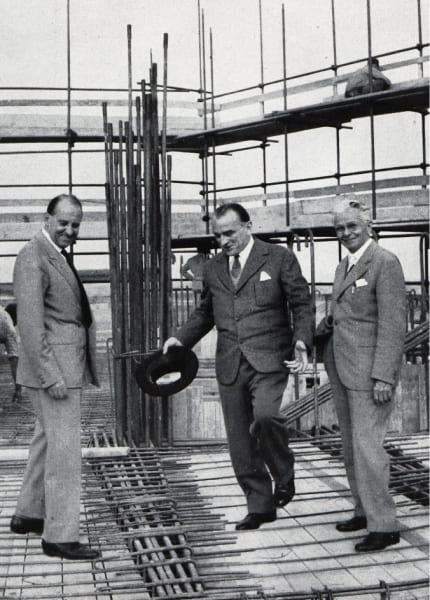
1946
Piero and Alberto Pirelli are back leading the company and establish a Foundation in their name aimed at the economic bettering of workers. Motor Scooter tyres for a new class of motorbikes are launched at the International Cycle and Motorcycle Show.
Ezio Bonini, advertisement for scooter tyres, 1953
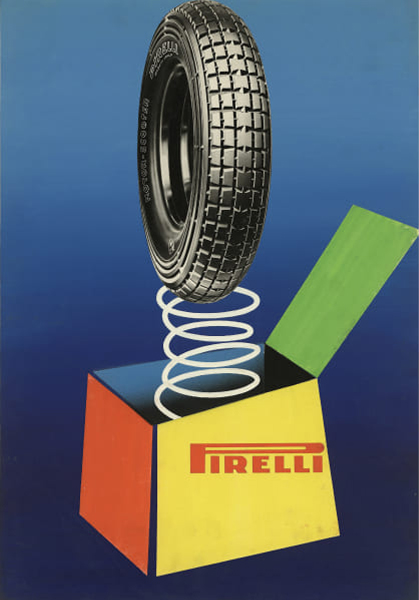
1947
The introduction of new processes and technological innovations brings production levels back to pre-war times. Pirelli, FIAT, Edison and Montecatini establish the Centre for Atomic Studies and allocate substantial amounts of money to finance its research. Activities at Pirelli Cultural Centre begin in Milan. Piero and Giovanni Pirelli become supporting members of the Piccolo Teatro di Milano.
Poster for the Pirelli Cultural Centre, 1964
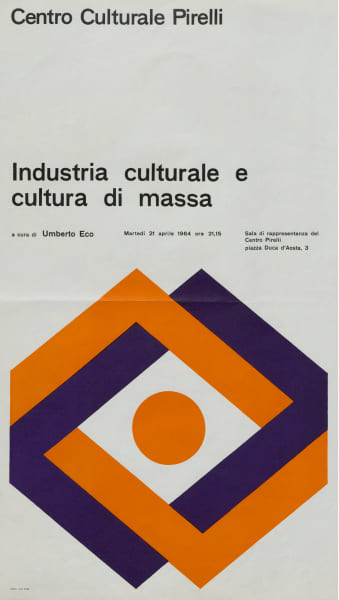
1920
The Panama Canal is inaugurated; start of the Depression of 1920-1921, a sharp deflationary recession taking place in the United States, the United Kingdom and other countries, including Italy; beginning of reformist government in Chile; in India, Gandhi begins a passive resistance and non-violent campaign, aimed at gaining India's independence from the British Empire.
Boat 'Gatun' passing through Gatun Lock in the Panama Canal at the opening in 1913. (Photo by Hulton Archive/Getty Images)
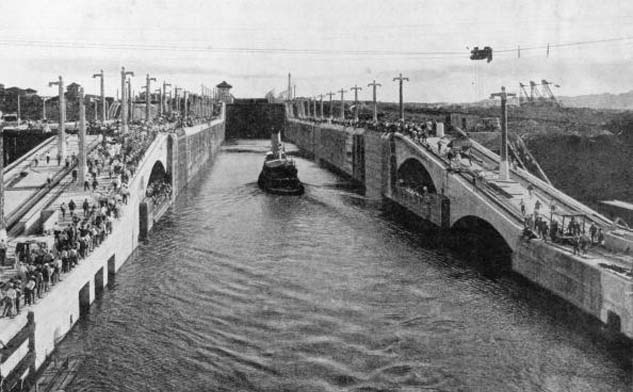
1922
Ireland starts its fight for independence, which will lead to the foundation of an Irish Free State; the Russian Socialist Federative Soviet Republic is established, the first official communist country in the world.
1924
Stalin becomes president of the USSR; Giacomo Matteotti is kidnapped and killed by a fascist squad led by Amerigo Dumini, probably at the order of Benito Mussolini; the “Unione Radiofonica italiana” (Italian Radiophonic Union, the future RAI) is established in Italy.
1925
Adolf Hitler publishes Mein Kampf; Benito Mussolini delivers the speech that marks the beginning of fascist dictatorship in Italy, and the Istituto Luce, the Regime's powerful propaganda tool and the oldest public institutions for the dissemination of films for educational and informative purposes in the world, is established.
1926
Arturo Toscanini conducts the first performance of the Turandot opera at the Teatro alla Scala in Milan; ISTAT activity begins thanks to law no. 1162, aimed at collecting, processing and propagating data that was previously managed by separate departments; in London, engineer John Logie Baird introduces the first television set prototype; Italian Umberto Nobile and Norwegian Roald Amundsen land the airship Norge, made with Pirelli's waterproof rubber, after flying over the North Pole, having left Rome two days before.
Airship Norge, 1926 (Photo by Kirby/Getty Images)
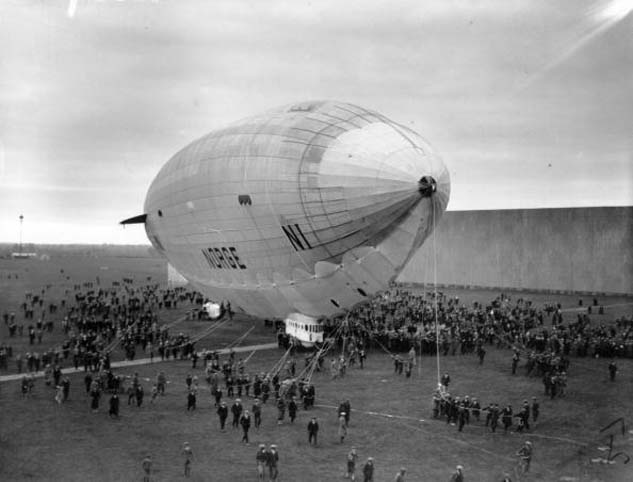
1927
Pilot Charles Lindbergh completes the first non-stop transatlantic flight from New York to Paris, starting a veritable revolution; “talkies” (films with sound) are launched in the United States; in Russia, Stalin gains an overall win and Trotsky, after being expelled from the party, is banished from the country.
1928
Walt Disney creates Mickey Mouse, who appears in the short film Steamboat Willie; British physician Alexander Fleming discovers penicillin; Kodak launches colour film for motion pictures; the Italia airship takes off, designed and operated by admiral Umberto Nobile.
1929
Start of the Great Depression, a major economic and financial crisis that disrupts the world's economy at the end of the 1920s, with significant repercussions over the first years of the following decade.
Wall Street On Black Tuesday, 1929 (Photo by PhotoQuest/Getty Images)
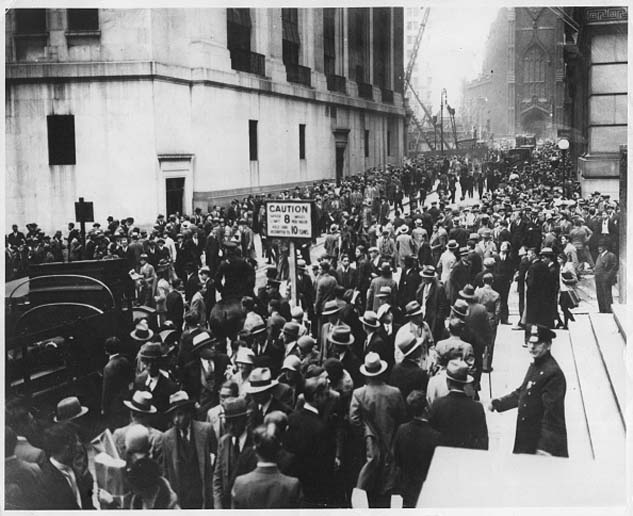
1931
The Empire State Building is inaugurated in New York; flooding in China kills 2.5 million people; Mao Zedong establishes the Chinese Soviet Republic; physicist Ernst Ruska finalises the electron microscope; Canada leaves the British Commonwealth.
1932
The first edition of the Venice Film Festival is held; in Italy, the De Filippo brothers' theatre company is founded; the American Amelia Earhart is the first woman to fly over the Atlantic; the first technicolour film is produced.
Amelia Earhart on arrival at Hanworth airfield after crossing the Atlantic, 1932 (Photo by Topical Press Agency/Getty Images)
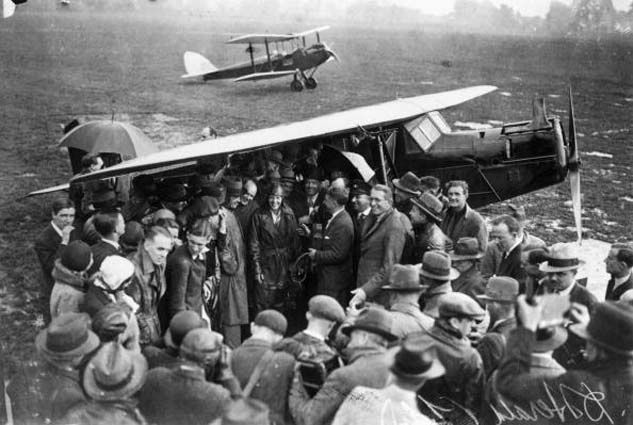
1933
Adolf Hitler is appointed chancellor of Germany, gaining absolute power; Franklin D. Roosevelt is elected President of the United States for the first of four consecutive terms; the Prohibition Era ends in the United States; Japan leaves the League of Nations.
1935
In Germany, the Nuremberg Laws for the protection of “the purity of German blood” are introduced; the Second Italo-Abyssinian War begins, during which the fascist army aims to encourage Italian migration to new colonies; Italian troops enter Ethiopia, starting a war that prompts the League of Nations to impose economic sanctions; in Italy, Luigi Sacco and Ugo Tiberio develop a radar system based on electromagnetic waves.
Radar Operator, 1945 (Photo by Fox Photos/Getty Images)
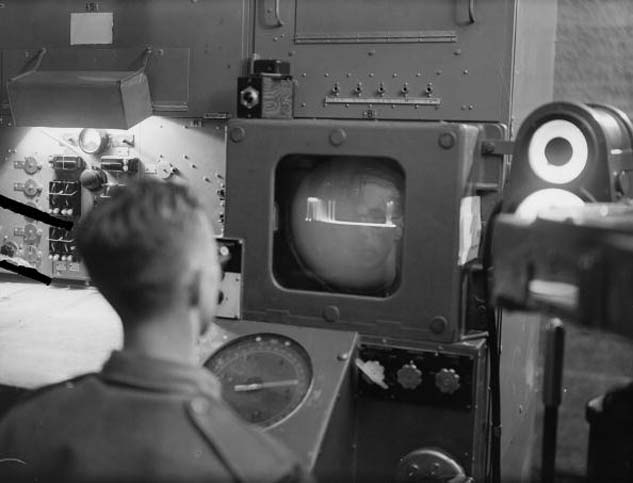
1936
Italy annexes Ethiopia; Civil War breaks out in Spain; in the United Kingdom, King Edward VIII abdicates in order to marry Wallis Simpson and is succeeded by his brother George VI; at the Berlin Olympics, African American athlete Jesse Owens wins four gold medals.
1937
The Golden Gate Bridge is inaugurated in San Francisco; Japan invades China, starting the Second World War in the Far East; Japanese troops kill tens of thousands of people in the Nanjing Massacre; the automotive company Toyota Motor Corporation is founded in Japan while Volkswagen is established in Germany, under National Socialist rule and by order of Adolf Hitler; the Guggenheim Museum is inaugurated in New York; Walt Disney's Snow White and the Seven Dwarfs is the first animated feature film in the history of cinema.
Golden Gate Bridge, 1935 (Photo by Hulton Archive/Getty Images)
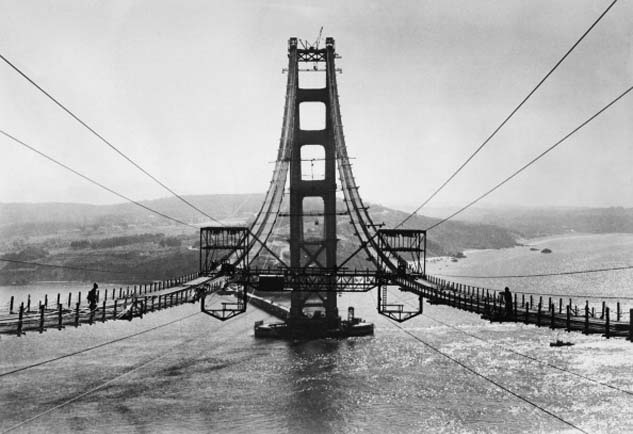
1938
Italy wins the World Cup for the second time in a row; in Germany, persecution against Jewish people leads to the Kristallnacht massacre in November; the great Purge starts in the USSR.
1939
On 1 September, Germany invades Poland, starting the Second World War; in Spain, the Civil War that began in 1936 ends with the victory of general Francisco Franco and the establishment of his dictatorial regime; Gone with the Wind is released in the United States, and wins ten Oscars.
1940
Germany scales down occupation in Poland, starts using blitzkrieg tactics and within a few months invades Denmark and Norway, Benelux and France; on 10 June, Italy declares war on France and the British Empire; in the United Kingdom, Winston Churchill becomes Prime Minister; McDonald’s opens its first fast-food restaurant in California.
Winston Churchill, 1939 (Photo by Marshall/Fox Photos/Hulton Archive/Getty Images)
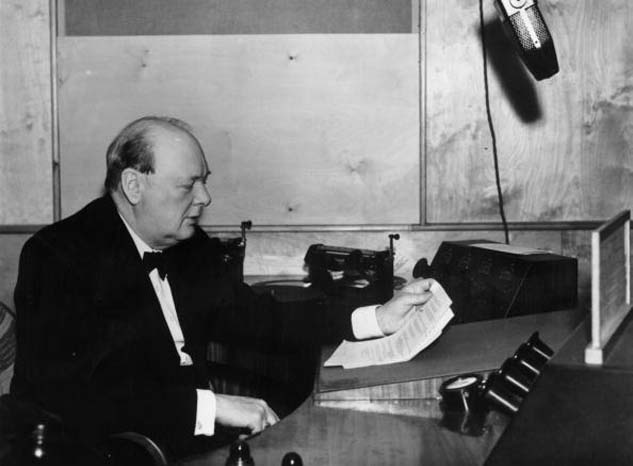
1942
27 countries sign the Atlantic Charter, which states various goals for the world after the end of the war: no territorial expansion, internal and external self-determination, right to democracy and self-government, freedom from fear and want, abandonment of the use of force, a general safety system based on disarmament; in Chicago, Enrico Fermi's team creates the first nuclear reactor; the Soviet army forces the Axis power to a dramatic retreat in the snow, followed by the second defensive battle on the Don.
Enrico Fermi on cover of "Pirelli magazine", no. 5, 1954
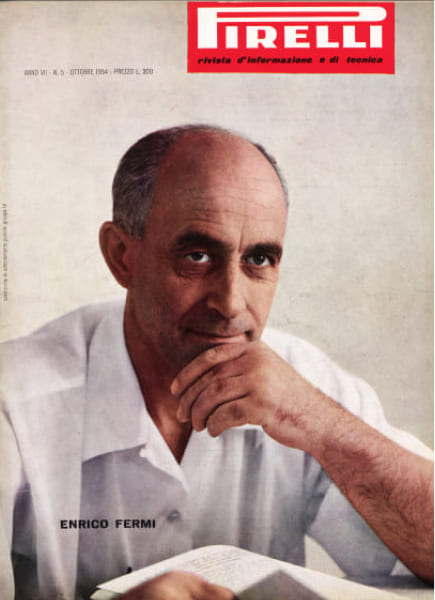
1943
ENIAC, the first general-purpose computer in history, is developed in the United States, at the University of Pennsylvania; in February, the Allies start bombing Milan, followed by four more major bombardments in August; in April, Germany begins the barbaric annihilation of the Warsaw Ghetto; on 10 July the Allies land in Sicily; on 8 September the armistice between Italy and the Allies is signed.
Operating ENIAC Computer, 1940 (Photo by © CORBIS/Corbis via Getty Images)
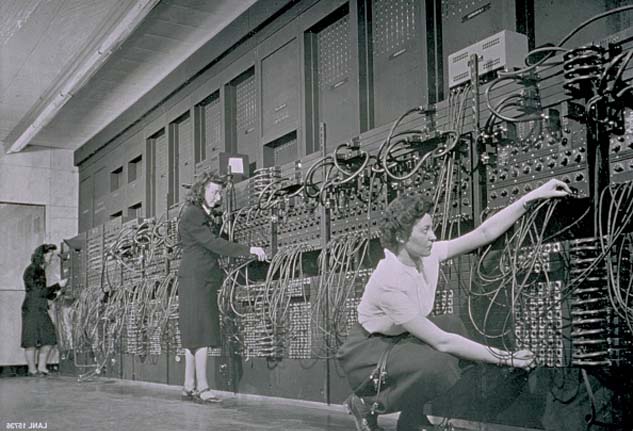
1944
On 6 June, on D-Day, the Allied troops land on the coast of Normandy; Paris is freed from Nazi rule in August; on 20 October, the Crispi di Gorla elementary school in Milan is hit during a bombing raid, resulting in 200 victims, mostly children.
1945
Thanks to help from the Allies, on 25 April 1945 Italy is liberated from Nazi-fascist occupation; admiral Karl Dönitz, Hitler's successor, signs Germany's unconditional surrender, ending a war that saw the genocide of 6 million Jewish people and 12 million dead among soldiers and civilians; on 6 and 9 August, the United States drops two atomic bombs on the Japanese cities of Hiroshima and Nagasaki, forcing Japan to surrender and ending the Second World War for good; the UN is constituted in San Francisco and the Arab League is formed in Cairo; the neorealist genre asserts itself in Italian cinema, thanks to film-makers such as Rossellini, Visconti, De Sica, Germi, Lattuada and many others.
1946
After years of war and the incredibly quick reconstruction of the opera house, the Teatro alla Scala di Milano reopens to the public with a performance conducted by maestro Arturo Toscanini, especially returned from the United States, where he had sought refuge during the conflict; on 2 June, after a referendum, Italy becomes a Republic; the first computer is built in the United States; Juan Domingo Perón becomes President of Argentina.
The reconstruction of the Teatro alla Scala with foam rubber padding, 1947
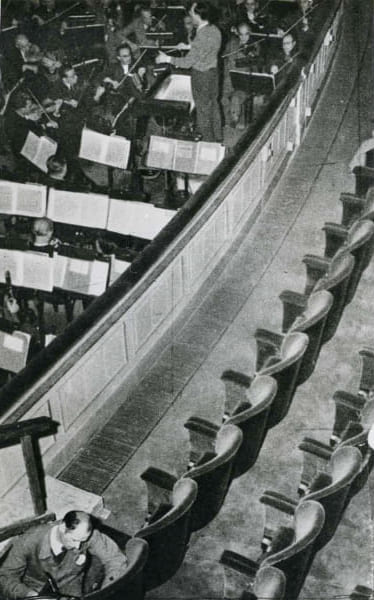
1947
American Secretary of State George Marshall announces his financial aid scheme (known as the Marshall Plan) to support the reconstruction of Europe; pilot Charles “Chuck” Yeager is the first human to break the sound barrier; the first transistor, a predecessor of the microchip, is invented in the United States; the Hyundai Group is founded in South Korea, still active today in the naval, railway, automotive, electronic, financial sectors, among many others; thanks to action by the Indian National Congress party, led by Gandhi, India and Pakistan proclaim their independence.
1948
Foundation of the information and technology magazine Pirelli. "Rivista di Informazione e Tecnica", conceived by Giuseppe Luraghi and Leonardo Sinisgalli, tasked with curating all advertising events of the company, and edited by Arturo Tofanelli.
The first issue of the "Pirelli magazine", 1948
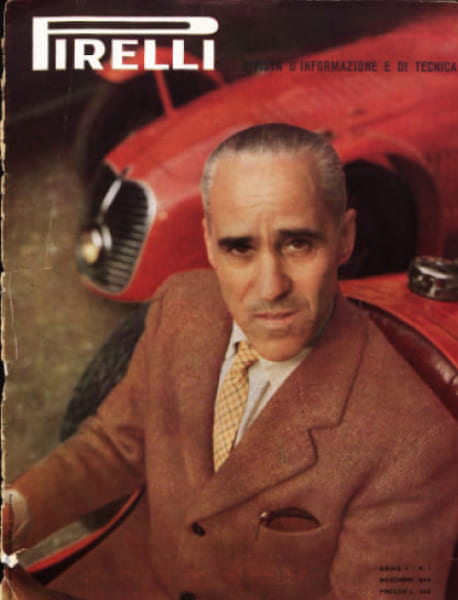
1949
The Pirelli "Motor Scooter", a small tyre capable of withstanding the exceptional wear caused by the very high rotation speed of mini-wheels, becomes a huge success. It's the year of racing triumphs: from Franco Nacci's journey from Palermo to the Arctic Circle and back on a FIAT 500C with Pirelli tyres, covering 400 km every day, to the first edition of the Gran Premio Pirelli, a cycling race conceived by Alfredo Binda and dedicated to young beginners, which will be held every year until 1957.
Max Huber, advertisement for scooter tyres, 1953
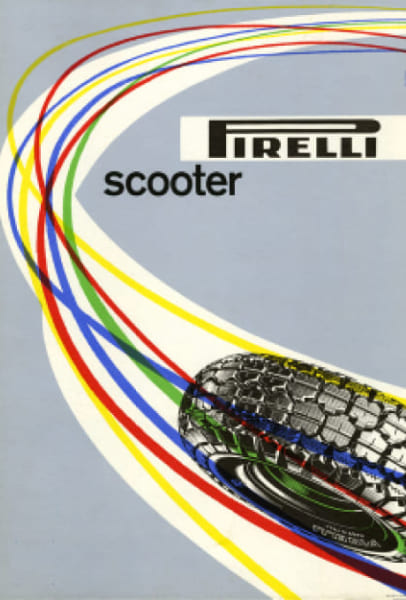
1950
The Italian Ministry of Postal Services commissions cables for the new long-distance telephone network and for television communication systems. Publishing of "Fatti e Notizie" (Facts and News), the Pirelli Group's periodical in-house magazine dedicated to all Italian employees, begins.
First issue of "Fatti e Notizie", 1950
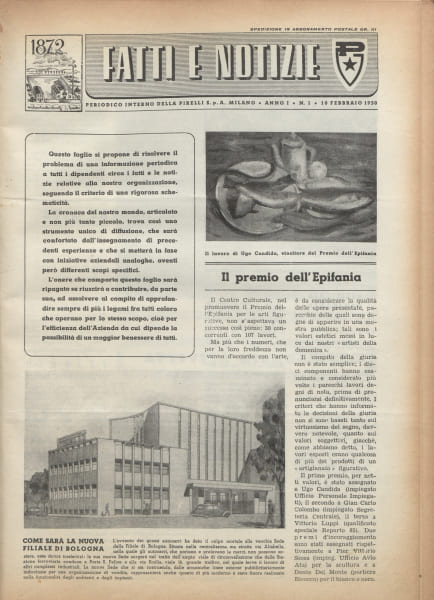
1951
Upon conclusion of studies started in 1949, a new type of car tyre, characterised by a belt in radial fabric placed between carcass and tread, is patented and launched on the market in 1953 under the name of "Cinturato" (Belted): this marks the debut of Pirelli radial technology. In the same year, the manufacturing of tyres in a joint-venture with U.S. Rubber begins in Argentina.
Bob Noorda, advertisement for Cinturato tyres, 1959
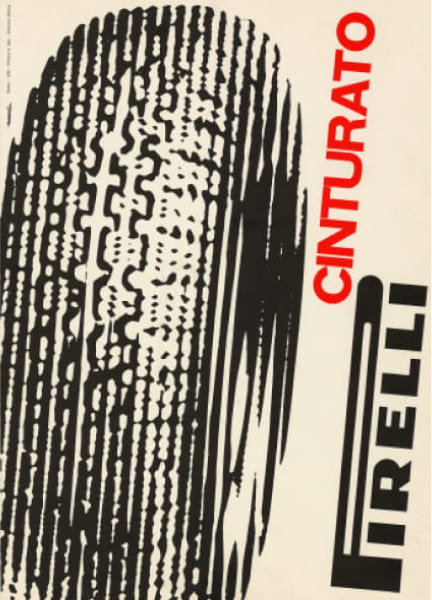
1953
Pirelli tyres conquer eight Formula 1 Grand Prix podiums with Ferrari and Maserati: Alberto Ascari is World Champion for the second time. Cable manufacturing continues: from supply of a new type of cable insulated with polythene for the transoceanic connection of northern Africa with Brazil, to production expansion in Canada.
Advertisement for Pirelli tyres, 1953
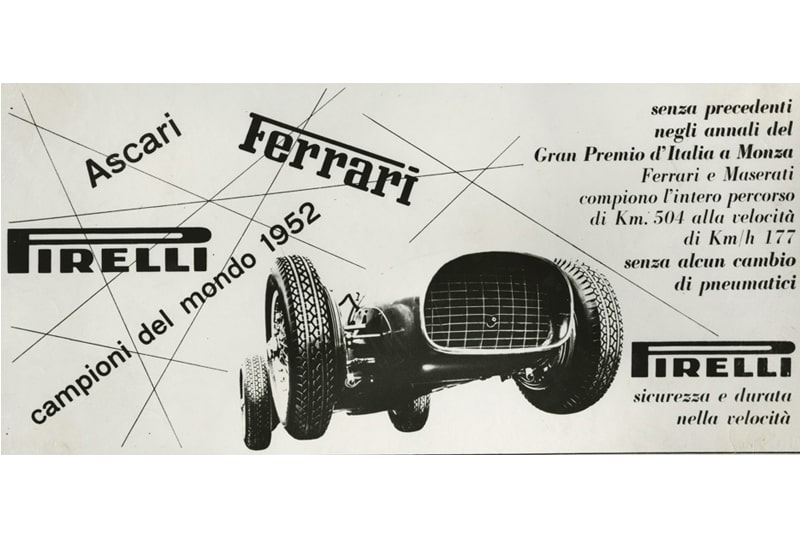
1954
The mechanical engineering company Azienda Meccanica is established in Milan, supplying the Pirelli Group with the machinery needed for the manufacture of tyres and various other articles. Pirelli acquires an India rubber plantation in Brazil, after the permanent sale of those in Indonesia. The foam rubber toy “scimmietta Zizì” (Zizì the monkey), designed with the “gatto Meo” (Meo the cat) by Bruno Munari wins the first edition of the Compasso d’Oro design award.
The “scimmietta Zizì” on the cover of the "Pirelli magazine", 1954
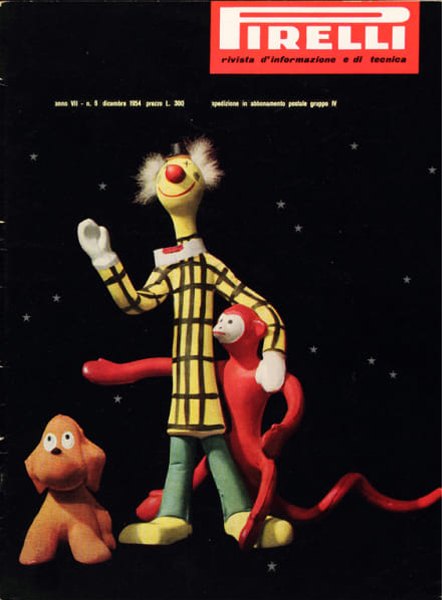
1956
Piero Pirelli passes away on 7 August. Alberto takes on the role of President, leaving that of Executive Director, with his son Leopoldo and engineer Luigi Emanueli as Vice Presidents. Pirelli stops the manufacturing of racing tyres.
1959
The plastic container designed by Roberto Menghi is exhibited at the MoMA. The New York museum preserves other works and materials related to Pirelli: Massimo Vignelli's poster for bike tyres, the film La lepre e la tartaruga (The hare and the tortoise) and the Cifra 3 watch.
The container designed by Roberto Menghi, 1959
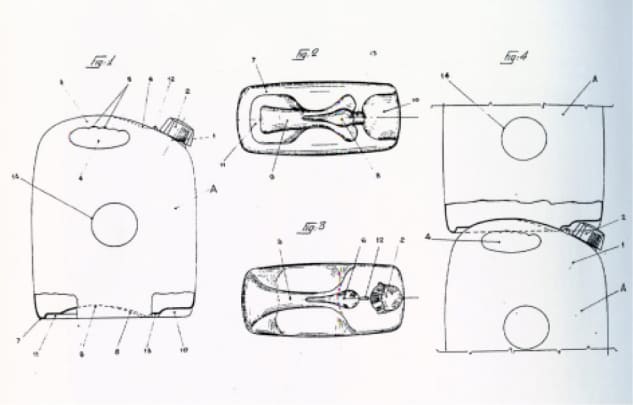
1948
On 1 January 1948, the Italian Constitution comes into force and the first general election is won by the Christian Democratic party; the Berlin Blockade starts in June, and Italy joins the Marshall Plan; Antonio Pallante shoots Palmiro Togliatti, leading the country to the brink of civil war; the Monza racing track, the third largest circuit in the world, is renovated; United Nations member countries sign the Universal Declaration of Human Rights.
Monza Circuit, 1952
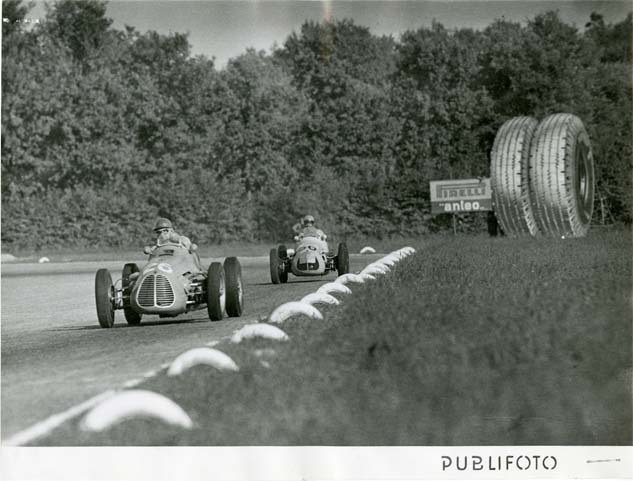
1949
Comecon, the pact of mutual economic assistance between Eastern European countries, is established, while Western countries, including Italy, found NATO in March; Enrico Mattei is appointed as liquidator of AGIP and the challenge to the “Seven Sisters”, international oil giants that financially dominate world's production until the 1973 crisis, gets underway; the People’s Republic of China and the DDR, the German Democratic Republic, are proclaimed.
1950
McCarthyism spreads in the United States, a political and administrative approach characterised by opposition towards pro-Communist people, groups and behaviours that are considered “subversive”; Walt Disney’s Cinderella is released in cinemas; in Italy, the Cassa per il Mezzogiorno (Southern Development Fund) is established, protests take place in the industrial areas of Genoa and Venice, and the national trade union CGIL dissolves, giving rise to CISL, the Italian Confederation of Trade Unions, and UIL, the Italian Labour Union; on 13 May 1950, the Formula 1 championship starts at Silverstone and is won by Nino Farina for the Alfa Romeo team; the Korean War begins; shipbuilding production exceeds 1938 levels; in Italy, the post-war Reconstruction period comes to an end.
The driver Nino Farina in an Alfa Romeo on the Silverstone circuit, 1950
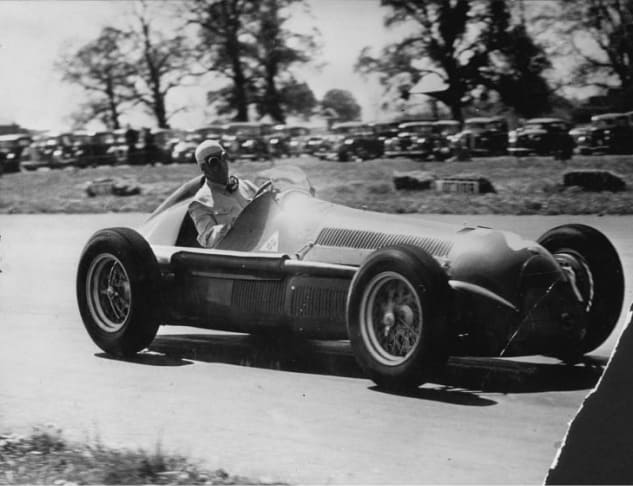
1951
Tax reforms take place in Italy, making tax returns compulsory; Italy, France, the Federal Republic of Germany, the Netherlands, Belgium, and Luxembourg sign the Treaty of Paris, establishing the European Coal and Steel Community (ECSC); the river Po bursts its banks causing the Polesine Flood, and the subsequent evacuation of 180,000 people and over 100 casualties.
A small pump working on a farm in the Polesine after the flood, 1951
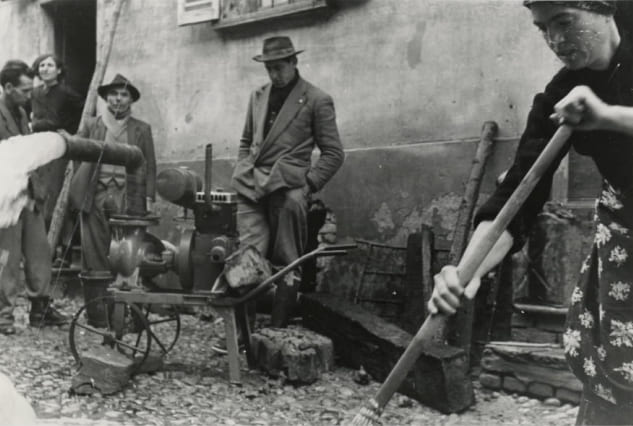
1953
The Italian Parliament approves Law no. 136/53, which establishes the national hydrocarbon corporation Eni (Ente Nazionale Idrocarburi, as well as the so-called “Legge truffa” (“fraud law”) promoted by De Gasperi and soon repealed, which assigned 65% of seats in the lower house of the bicameral Parliament to those who gained 50% of the votes during the elections; James Watson and Francis Crick describe the double helix structure of DNA in the journal Nature; in Cuba, Fidel Castro and a group of rebels attack the Moncada Barracks, marking the start of the Revolution; after the death of Stalin, Nikita Khrushchev comes to power as First Secretary of the Communist Party of the Soviet Union; Trieste is returned to Italy; the United States and the United Kingdom decree the end of the Allied Military Government.
1954
On 3 January, in Italy, RAI begins broadcasting with TV announcer Fulvia Colombo; in Pittsburgh (USA), the first mass vaccination for polio takes place; in Europe, CERN (European Organization for Nuclear Research) is founded; in Italy, the “Compasso d'Oro” award for industrial design is established, the brainchild of Gio Ponti; Achille Compagnoni and Lino Lacedelli, led by Ardito Desio and with the help of Walter Bonatti, are the first to reach the summit of K2; in Vietnam, the Battle of Dien Bien Phu breaks out, which will lead to the French defeat; the First Indochina War ends, but the Algerian War begins.
First television broadcasts, 1950s
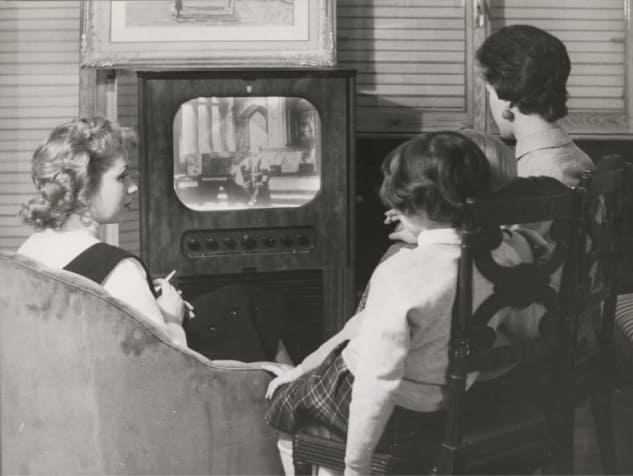
1955
Eight Eastern European states establish the Warsaw Pact, a defensive military alliance opposed to NATO; the ECSC makes plans for the creation of the European Single Market and the EAEC (European Atomic Energy Community); thanks to a motion by Canada, Italy becomes a member of the United Nations and signs a bilateral agreement with Germany for the recruitment of Italian labourers, leading to mass migration to Germany.
1956
The 7th Olympic Winter Games are held in Cortina d’Ampezzo; at the 20th Congress of the CPSU, Khrushchev denounces Stalin’s crimes; in Marcinelle, Belgium, a coal mining accidents causes the death of 262 miners, including 136 Italian miners; in Hungary, anti-Soviet uprisings begin, and are suppressed by the USSR within a few weeks.
1959
In Cuba, Fulgencio Batista leaves Havana and Fidel Castro enters the capital; the first Italian nuclear reactor is inaugurated in Ispra, province of Varese; in the United States, the American President and the General Secretary of the Communist Party of the Soviet Union meet for the first time, initiating the first “period of détente” in international relations.
The console and instrument panel of a nuclear reactor
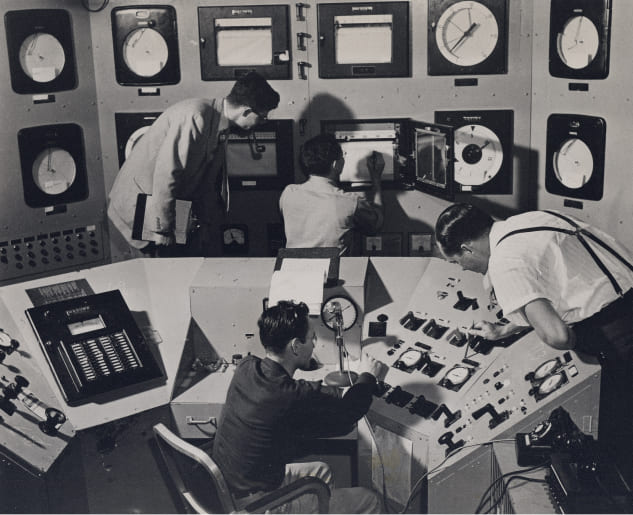
1960
The new Group's office building, the Pirelli Tower designed by Gio Ponti, located in the heart of Milan, is inaugurated. At the same time, Pirelli Hellas is established in Greece, with a plant in Patras, while Tűrk Pirelli Laştikleri is founded in Turkey, with a production site in Izmit, while in Figline Valdarno (Florence) the first plant for the manufacture of steelcord for tyres becomes operative.
The Pirelli Tower, 1960
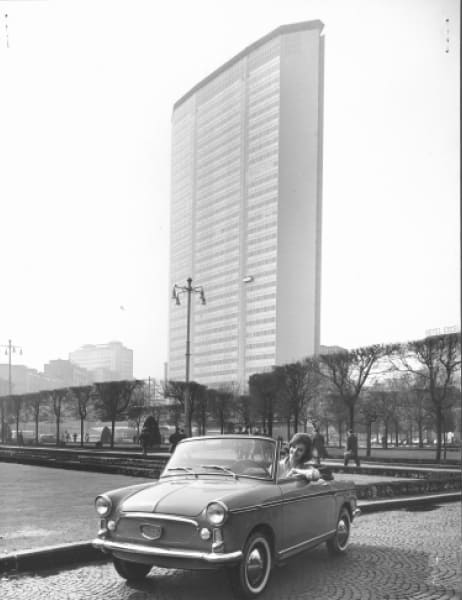
1961
At the Turin International world's fair, a large mosaic entitled La ricerca scientifica (Scientific research), realised by the Accademia dei Mosaicisti of Ravenna and designed by artist Renato Guttuso, is exhibited in the Pirelli pavilion. Sales of the “N+R” tyres (in nylon + rayon) are a success.
Raymond Gfeller, Advertisement for N+R tyres, 1961
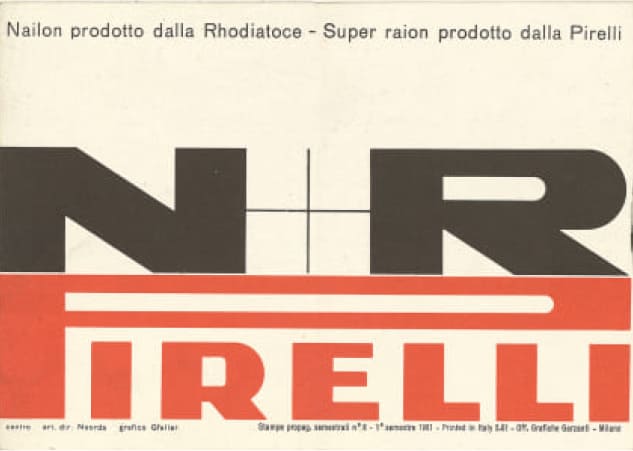
1962
The new “Sempione - Safety Shoulder” tyre characterised by a rounded sidewall, with no edge, for wider grip on the road, is launched on the market. The first issue of the monthly publication "Vado e torno" (I'll be right back), dedicated to the world of road haulage and realised by Pirelli's Advertising Department, is published.
Gerhard Forster, advertisement for Sempione tyres, 1962
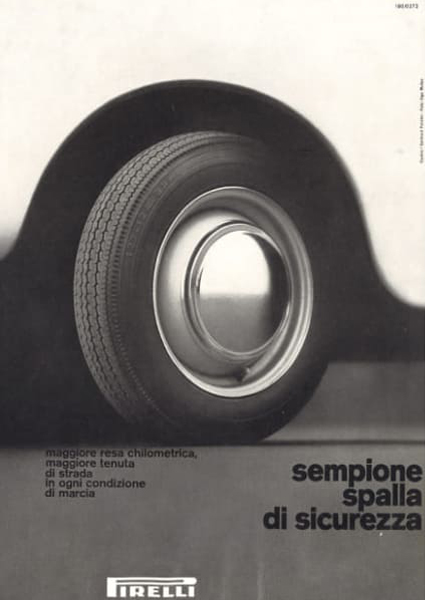
1963
The plant in Settimo Torinese (Turin) becomes operative, manufacturing first air chambers and then "Cinturato" original equipment tyres. The factories in Villafranca Tirrena (Sicily) – manufacturing motorcycle tyres – and in Giovinazzo (Apulia) – manufacturing plastic cables – become operative. Pirelli acquires the Veith Gummiwerke company, based in Germany, which changes its name to Veith Pirelli AG.
The Villafranca plant, 1970s
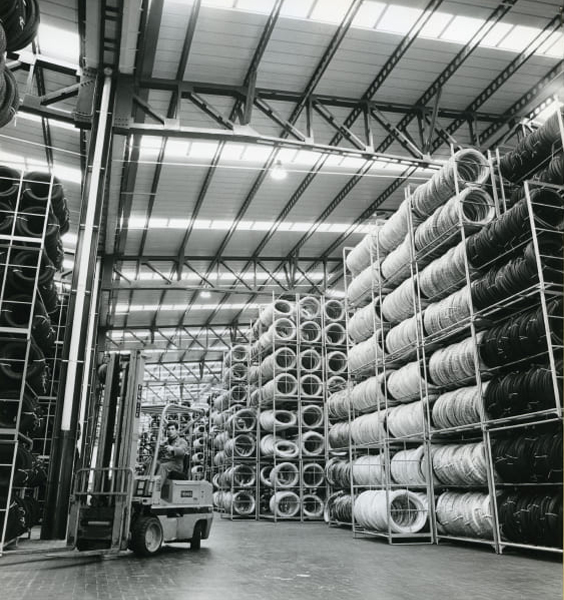
1964
Looking for a marketing strategy to outperform domestic competitors, Pirelli Ltd launches its first Calendar, entrusting its creation to photographer Robert Freeman, already famous for portraying the Beatles. Since then, the Pirelli Calendar has been capturing each era and offering an interpretation of its culture through the gaze of the most of renowned contemporary photographers.
1965
Alberto Pirelli resigns at the age of 83 and is appointed Honorary President, succeeded by his son Leopoldo. An underwater cable is laid at a depth of over 400 m and for a length of over 100 km in the stretch between Corsica and the mainland, and its considered “the first of its kind in the world”.
Leopoldo Pirelli on the Tower, 1967
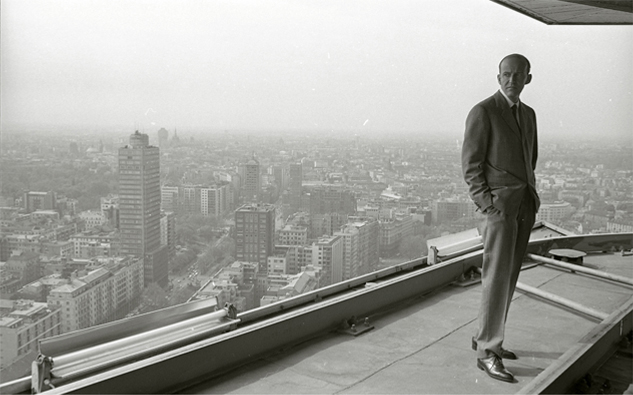
1968
In Carlisle, United Kingdom, manufacture of radial tyres begins. In Argentina, to deal with the great increase in motorisation and relentless international competition, the plant in Buenos Aires is expanded. The following year, the new tyre test track in Vizzola Ticino (Varese), is inaugurated, and is still active as outdoor testing facility for Pirelli tyres today.
The test track in Vizzola Ticino, 1969
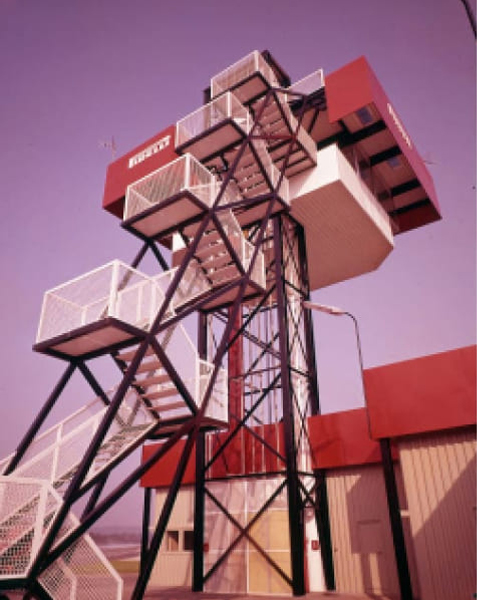
1971
Alberto Pirelli passes away on 19 October. Pirelli and Dunlop integrate the industrial activities of the two Groups, with the aim of achieving wider development opportunities at a global level. The Pirelli-Dunlop “Union” will be dissolved in 1981.
Leopoldo Pirelli and Reay Geddes, Dunlop President, 1971
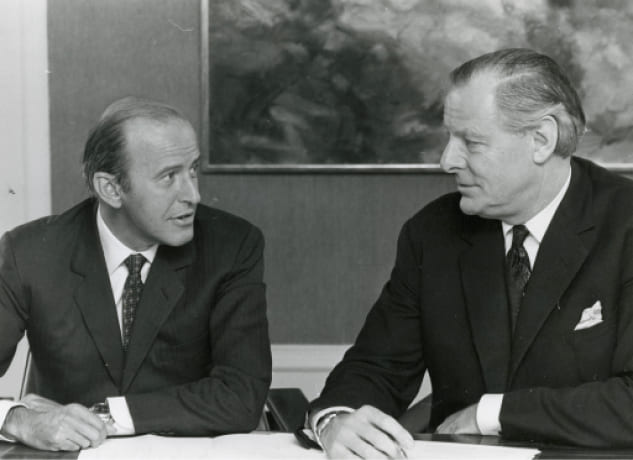
1972
The "Cinturato" tyre with metallic belt is developed. The FIAT 124 Spider-Pirelli wins the first European rally title. High oil prices and the crisis affecting the automotive industry take a heavy toll on the rubber sector, too. The Soprintendenza Archivistica per la Lombardia (Archival superintendence for Lombardy) proclaims the Pirelli Historical Archive as an institution of significant public interest.
Advertisement for Cinturato CN54 tyres, 1972
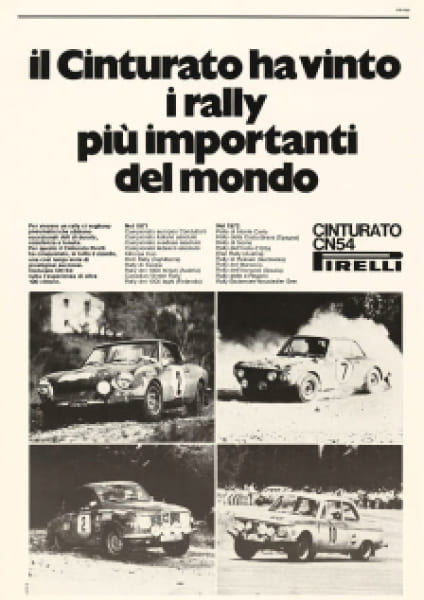
1973
On 3 April, after a road accident, Giovanni Pirelli, Alberto's eldest son, meets an early death at only 55 years of age; he had declined to assume leadership of the industrial group founded by the grandfather, leaving the task to his brother Leopoldo. A partisan commander and author, in the post-war period Giovanni had curated the volume Lettere ai condannati a morte della Resistenza italiana (Letters to those in the Italian Resistance sentenced to death).
Giovanni Pirelli, 1973
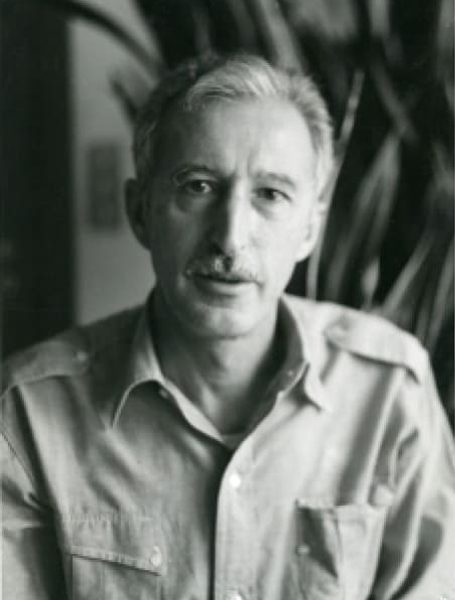
1974
The "P7" tyres, created as a racing tyre for the Lancia Stratos thanks to the intuition of engineer Mario Mezzanotte, become the first “super lowered” and very high-performance tyres. The Gruppo Pirelli Motovelo is established, for the study and manufacture of motorcycle tyres. The Bicocca labs undertake research in fibre optics to enhance transmission in phone cables.
Sandro Munari's Lancia Stratos at the Monte Carlo Rally, 1976
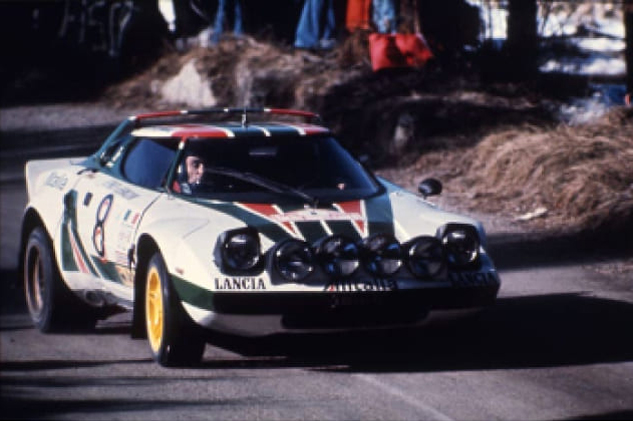
1977
Four new plants for the manufacture of cables and tyres are inaugurated in Brazil, and the Pirelli Cables Australia opens in Sydney.
1978
The Pirelli Headquarters move to Piazzale Cadorna, leaving the Pirelli Tower to the Regione Lombardia government authority, which will officially move into it only in 1980. Soviet plants place significant orders for the supply of machinery for tyre manufacturing and rubber components, while a memorandum of understanding is signed with Algeria for the construction of a tyre factory.
Advertisement for Pirelli tyres, 1978
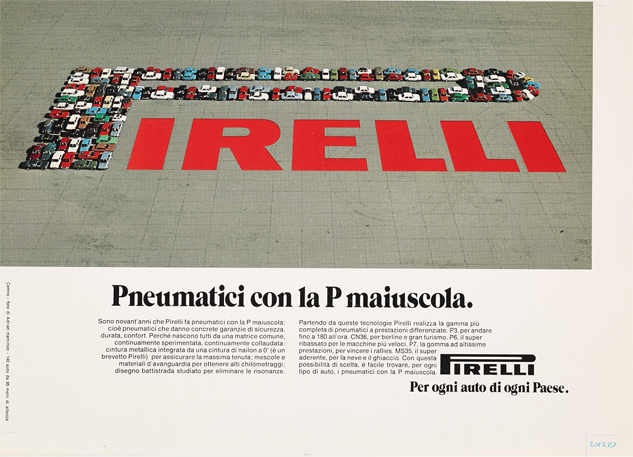
1980
The "P8" tyre is developed, a radial tyre for cars characterised by low rolling resistance, resulting in lower fuel consumption.
P8 tyres, 1980
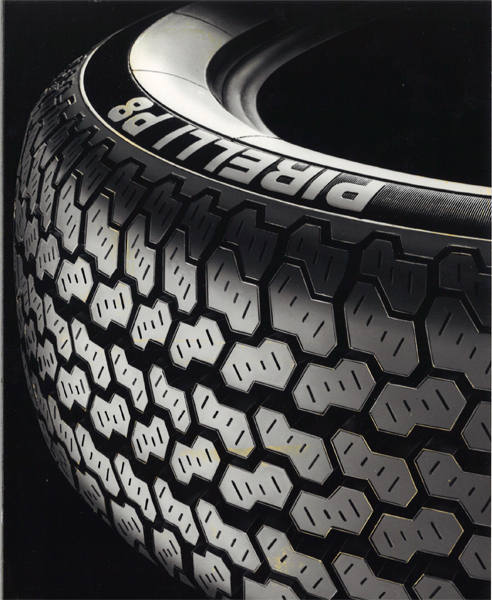
1960
John Fitzgerald Kennedy wins the presidential election, becoming the 35th President of the United States; the Italian lira is recognised as the most stable currency in the world; Federico Fellini’s La Dolce Vita is released and wins the Palme d’Or at the Cannes Film Festival; the 17th Summer Olympics open in Rome, soon after the inauguration of the “Leonardo da Vinci” airport in Fiumicino; Benin, Burkina Faso, the Democratic Republic of the Congo, Côte d’Ivoire, Gabon and Somalia gain independence.
Cover of Pirelli magazine no. 5, 1960
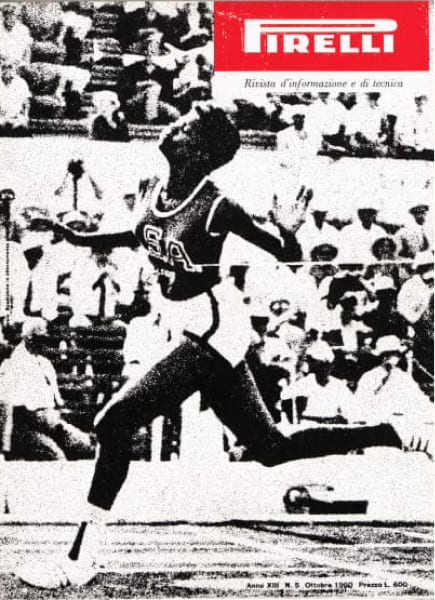
1961
The United States and Cuba break diplomatic relations and the attempted invasion by Cuban exiles trained by the CIA is repelled; Bob Dylan makes his New York debut; Yuri Gagarin becomes the first human being to journey into outer space while, a month later, Alan Shepard becomes the first American to travel into space as part of the crewed Project Mercury flight; Kennedy announces the Apollo Program, with the aim of landing on the moon; Leonard Kleinrock, MIT graduate, publishes the first paper on packet switching, the technology on which the Internet is based; Kennedy and Khrushchev hold discussions about Berlin and the ban on nuclear experiments; the Communist regime starts building the Berlin Wall; the United States launches its first military operation in Vietnam.
Yuri Gagarin in the cockpit of the Vostok spacecraft, 1961
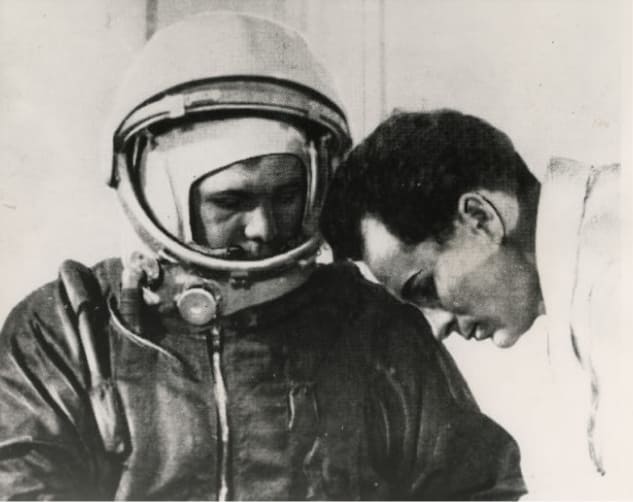
1962
On 18 March, an agreement between France and the National Liberation Front is signed, recognising the independence of Algeria; the Second Vatican Council is held in Rome; the Cuban Missile Crisis breaks out, leading the world to the brink of another world war; Watson, Crick and Wilkins are awarded the Nobel in Medicine for discovering the double helix structure of DNA.
The Second Vatican Council in St Peter's , 1962
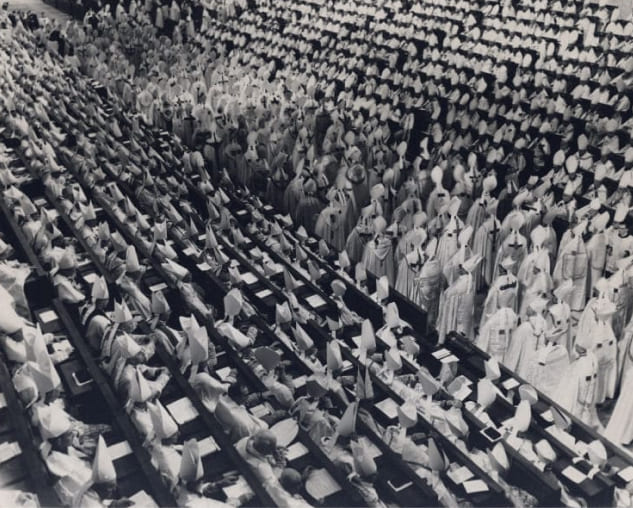
1963
The Socialist Federal Republic of Yugoslavia is established, with Josip Broz Tito named president for life; at the Vatican, Pope John XXIII publishes his last encyclical, Pacem in Terris (Peace on earth), a message of hope counteracting the worries about the future – he is succeeded by Pope Paul VI; Martin Luther King delivers his “I have a dream” speech in front of the Lincoln Memorial in Washington; a landslide falls from Monte Toc, Northern Italy, into the reservoir created by the Vajont Dam, causing the death of 1,917 people; Lee Harvey Oswald assassinates John Fitzgerald Kennedy in Dallas, Texas; Giulio Natta is awarded the Nobel Prize in Chemistry, following his discovery of the polymerisation of propylene and the production of isotactic polypropylene.
The public anxiously follow news of the assassination of President John Fitzgerald Kennedy
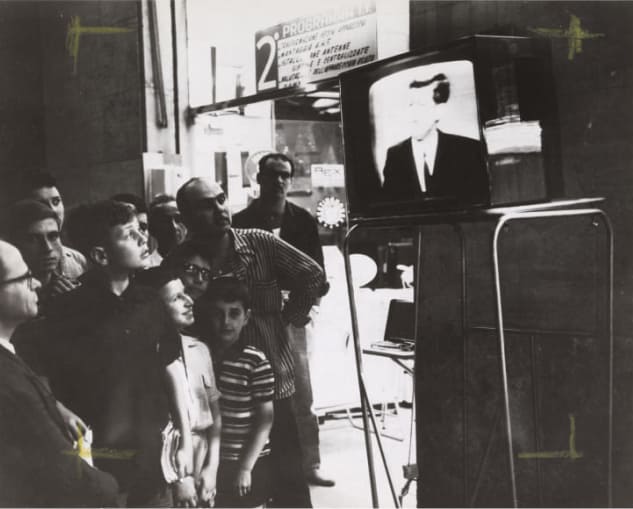
1964
The Great St Bernard Tunnel opens to traffic, connecting Italy and Switzerland; the United States and the USSR reach an agreement for nuclear disarmament; during the first Moro government, Giovanni De Lorenzo plans the Piano Solo (Plan Solo), an aborted coup d'état; North Vietnamese patrol boats attack two American destroyers, providing the United States with a pretext to start the Vietnam War; on 4 October, the Italian motorway Autostrada del Sole (Sun Motorway) is inaugurated, as well as the first Milan Metro line; the first Italian satellite, San Marco 1, is sent into orbit.
A rest area on the newly opened Autostrada del Sole
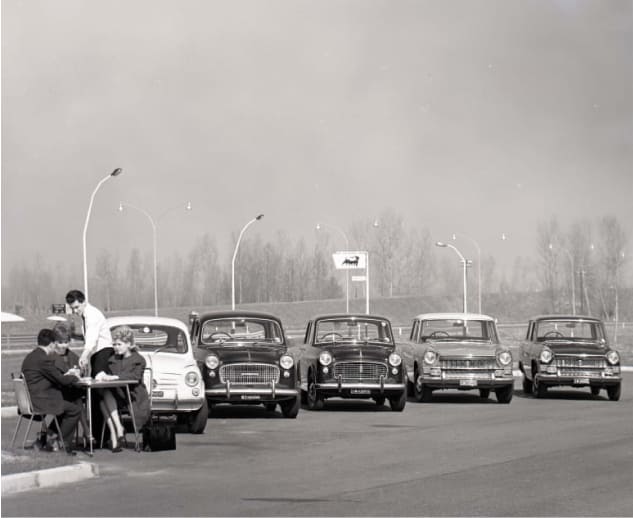
1965
The PLO (Palestine Liberation Organization) is founded; Mariner 4, an American space probe, is the first spacecraft to reach Mars, from where it sends back 21 photographs; Saragat and De Gaulle inaugurate the Mont Blanc Tunnel between Italy and France; Italian ocean liners Michelangelo and Raffaello begin carrying passengers: they are the last two great ocean liners to be built in Italy; Pope Paul VI intervenes into the historical and political spheres by addressing the United Nations with a memorable speech for world peace.
Inauguration of the Mont Blanc tunnel, 1965
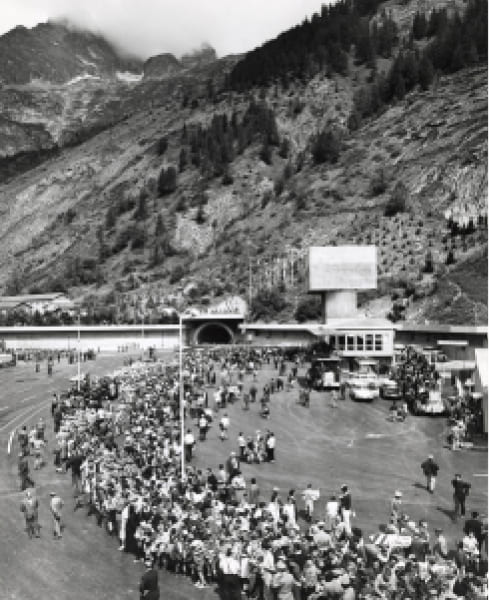
1967
Pope Paul VI publishes the social encyclical Populorum Progressio (The development of peoples), on the cooperation between peoples and the issue posed by developing countries; the Vietnam War continues with the United States's failed offensive in the Mekong Delta; the Six-Day War breaks out between Israel and Egypt, Syria and Jordan, with Israel capturing the Sinai Peninsula, the Gaza Strip from Egypt, the West Bank and East Jerusalem from Jordan and the Golan Heights from Syria; in Cape Town, surgeon Christian Barnard performs the world’s first heart transplant.
Professor Christian Barnard and Italian President Giuseppe Saragat in a meeting at the Quirinale, 1968
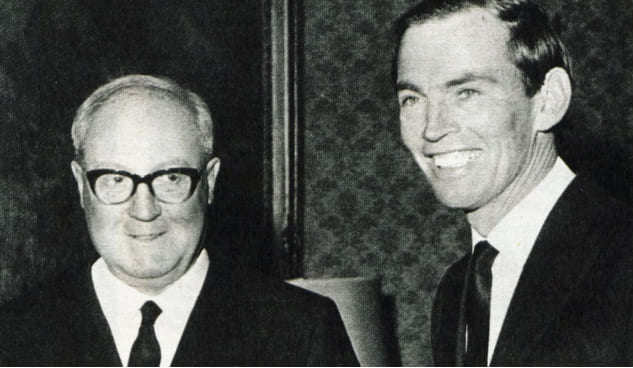
1968
On 5 January, the “Prague Spring” begins with the election of Alexander Dubček, a period of political freedom that leads to the granting of new rights, a partial decentralisation of the economy and democratisation, until Warsaw Pact tanks invade Prague; in Vietnam, General Vo Nguyen Giap launches the Tet Offensive, to which the United States respond by killing 450 civilians in Mỹ Lai; in Italian universities, clashes between students and the police take place; in the Latin Quarter of Paris, riots between the police and students lead to the May 68 events; in Memphis, Martin Luther King Jr. is assassinated by James Earl Ray, and Robert Kennedy, John Kennedy's brother, is assassinated in Los Angeles.
1969
Richard Nixon becomes President of the United States, starting peace talks on the Vietnam War; Yasser Arafat is elected as leader of the Palestine Liberation Organization; in Libya, colonel Muammar Gaddafi seizes power in a military coup; Concorde takes off for the first time in Toulouse, France. Italy introduces old-age pensions, paid by the INPS, the National Institute of Social Security, to citizens with an insufficient income; on 21 July, two human beings land on the Moon: Neil Armstrong and Buzz Aldrin, part of the Apollo 11 space mission, while in November it's the turn of the astronauts from the Apollo 12 mission; ARPANET, the precursor of the Internet, is launched; a bomb goes off in Piazza Fontana, Milan, killing 17 people and marking the beginning of Italy's “Years of Lead”.
The Earth seen from the Moon, 1969
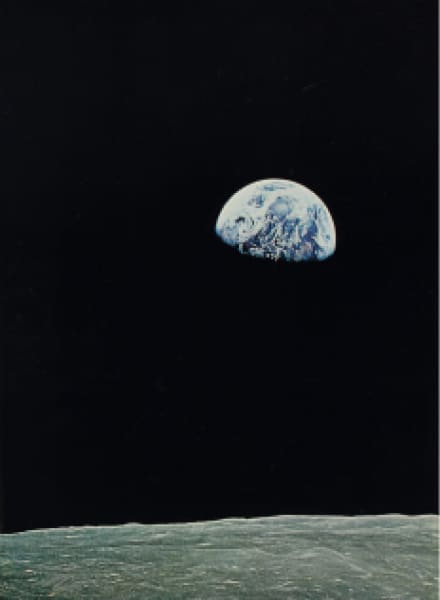
1971
Richard Nixon suspends the convertibility of the US dollar into gold and brings to an end the 1944 Bretton Woods agreement and the International Monetary Fund; in Palermo, chief prosecutor Pietro Scaglione and his driver Antonio Lo Russo are killed by the Corleonesi mafia clan led by Totò Riina: this is the first of many massacres that will lead to the Capaci and the Via d'Amelio bombings in Sicily; in Italy, the VAT (value added tax) regime replaces the General Agreement on tax revenue (IGE); the People’s Republic of China is admitted into the UN; Intel develops the very first commercial microprocessor.
1972
On 30 January, the Bloody Sunday massacre takes place in Northern Ireland, when British soldiers from the 1st Battalion, Parachute Regiment, start shooting civilians during a protest march, wounding 26 people and killing 14 people; Richard Nixon goes on an official visit to China, paving the way for the restoration of diplomatic relations between the two countries; the Watergate scandal breaks out during the presidential election campaign, engendered by the discovery of illegal wiretapping carried out at the headquarters of the Democratic National Committee by people connected with Nixon's Republican party; in 1972, Philips launches the first video recorder for home use, and the first email is sent; in Milan, Giorgio Strehler becomes director of the Piccolo Teatro.
Giorgio Strehler presents L'opera da tre soldi, 1956
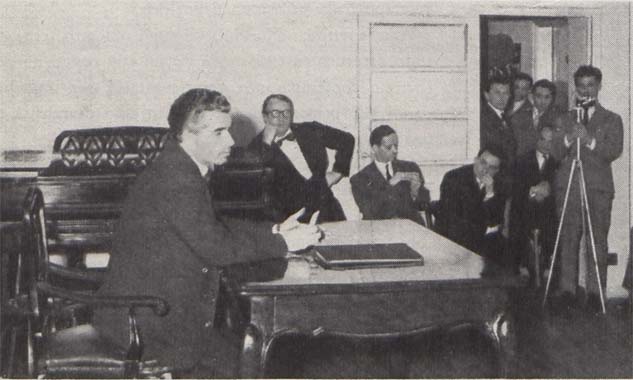
1973
The Paris Peace Accords mark the end of the Vietnam War; in Chile, a military coup leads to the death of Salvador Allende and the start of Pinochet's military dictatorship; the Yom Kippur War breaks out between Egypt and Israel, which will end with the “Kilometer 101” cease-fire agreement; an austerity policy is adopted, to deal with crises and inflation, which includes restrictions on petrol consumption.
1974
The Italian Referendum on divorce defeats the attempt to repeal the related law recently voted in by Parliament; the Piazza della Loggia bombing in Brescia marks the resumption of the strategy of tension in Italy; Consob, the Italian public authority responsible for regulating the Italian financial markets is established; a stagflation period begins in all industrialised countries.
1976
The Palestine Liberation Organization is admitted to the United Nations Security Council; the first issue of newspaper "la Repubblica", edited by Eugenio Scalfari, is published; in California, Steve Jobs and Steve Wozniak found Apple Computer; in Italy, a major earthquake, measuring 6.4 on the Richter scale destroys a large area of northern Friuli; death of Mao Zedong, President of the People’s Republic of China since 1949.
1977
After some years spent experimenting, and much later than other European countries, RAI launches its first colour broadcasting service; in Libya, colonel Gaddafi announces the establishment of the Great Socialist People’s Libyan Arab Jamahiriya; in Milan, the editor of newspaper "Il Giornale Nuovo", Indro Montanelli, is shot in the legs by the Red Brigades.
1978
MP Aldo Moro is kidnapped by the Red Brigades and, two months later, is found dead in Via Caetani in Rome; Parliament approves law no. 194/78 , which legalises abortion; it's the “year of three popes”: Pope Paul VI dies and is succeeded by John Paul I, who passes away a little over a month later and is replaced by John Paul II.
1980
An Itavia passenger jet breaks apart in mid-air above Ustica (Sicily), causing 81 deaths; a bomb explodes at Bologna railway station, leaving 85 people dead and over 200 injured; in Turin, the “March of the 40,000” takes place, a protest by FIAT employees and executives demanding the reopening of the factories shut down by the trade unions; the Irpinia earthquake causes over 3,000 deaths in the Campania and Basilicata regions; tension between Iran and Iraq over control of oil fields on their shared border escalates into war.
1981
After an absence of 25 years, Pirelli returns to Formula 1, equipping the British racing stable Toleman with P7 tyres, an agreement that will continue until 1991, with great teams such as Brabham, Lotus, Benetton. The first fibre optic telephone line part of the national network is laid between Padua and Mestre.
Brian Henton on Toleman-Hart at the Monaco Grand Prix, 1981
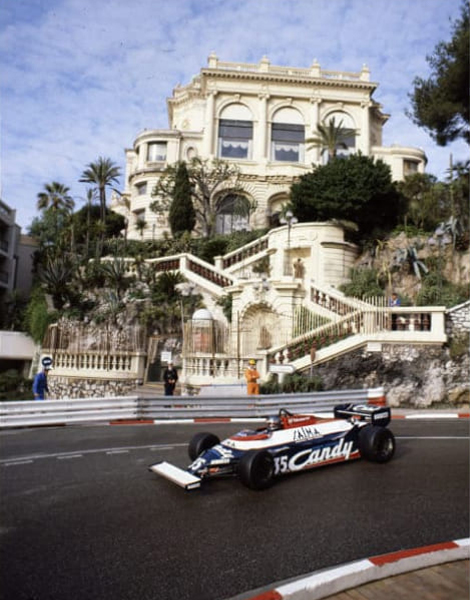
1982
Through the Fibre Ottiche Sud company, Pirelli, in joint venture with Sirti, starts the Italian production of fibre optics in Battipaglia (Salerno), followed soon after by other international subsidiaries.
Fibre optics
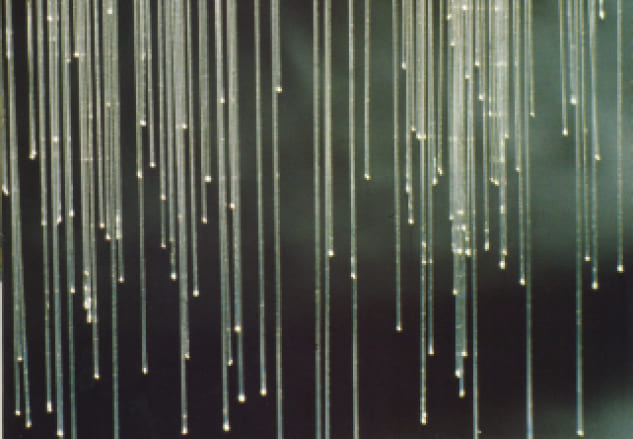
1983
Pirelli is the first to develop motorcycle radial tyres: the "MP7", conceived for the new generations of motorcycles, able to go faster than 240 km/h.
Advertisement for motorcycle tyres, 1975
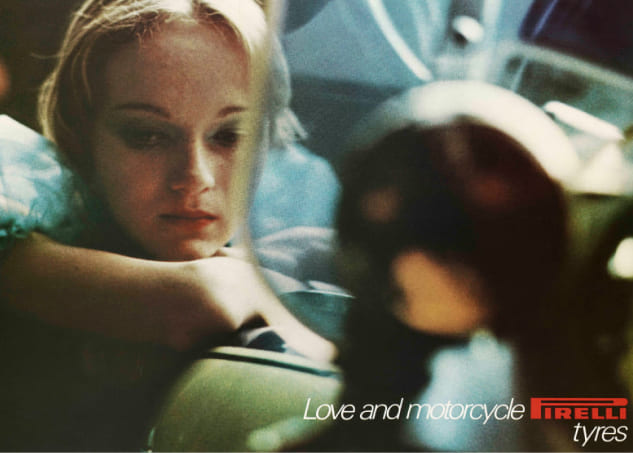
1985
The second generation of “super-lowered” tyres is developed, the "P600" and the "P700", as well as the world-famous "P Zero", created for the rally version of the Lancia Delta. The Celikord company is established in Turkey, for the manufacture of metallic cord.
The Lancia Delta S4, 1985
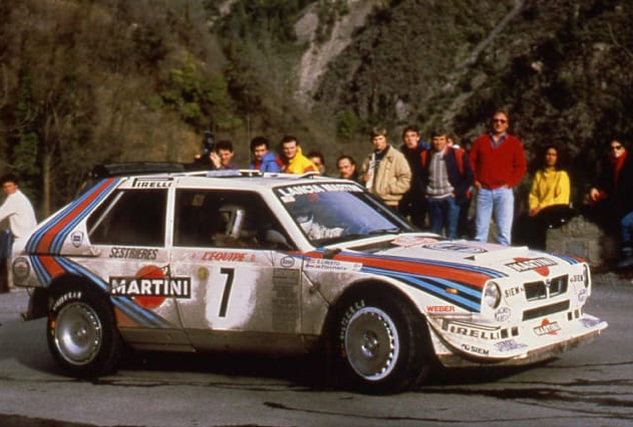
1986
Pirelli acquires the German company Metzeler, manufacturer of motorcycle tyres. In Milan, the “Bicocca Project” gets underway, aimed at the redevelopment of the area surrounding the Pirelli Headquarters, led by the architectural firm Studio Gregotti, winner of the international competition launched to assign the curation of the regeneration project.
Cover of Fatti e Notizie dedicated to the Bicocca Project, 1990
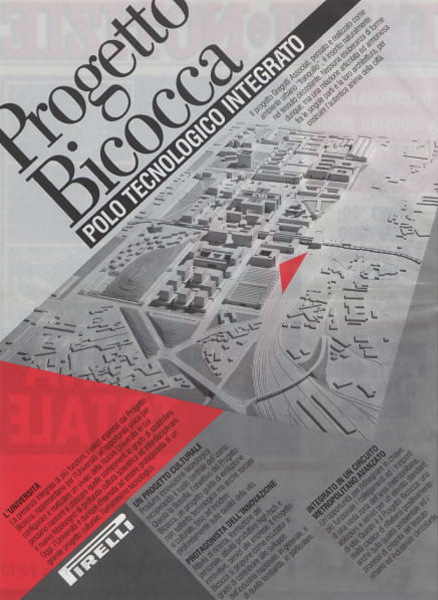
1987
The collaboration with Ferrari and the experience acquired in the most prestigious racing competitions in the world give rise to the "P Zero" road version tyres, designed for the Ferrari F40.
Advertisement of Pirelli P Zero tyres, 1988
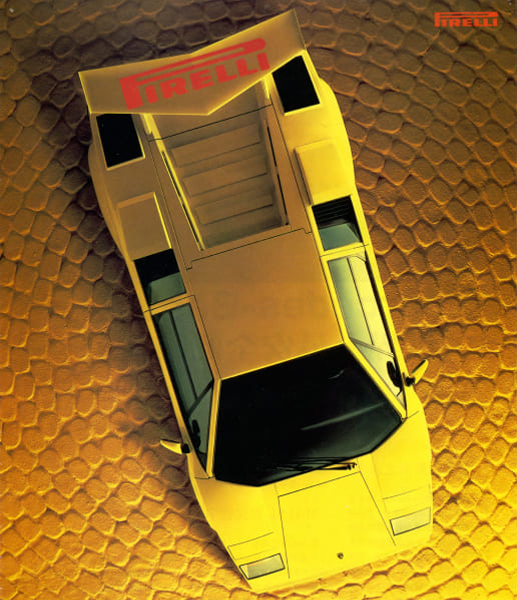
1988
Through the acquisition of the American Armstrong Tire Company, the tyre sector attempts to penetrate North American industry.
Technical drawing, side view of an Armstrong tyre, 1997
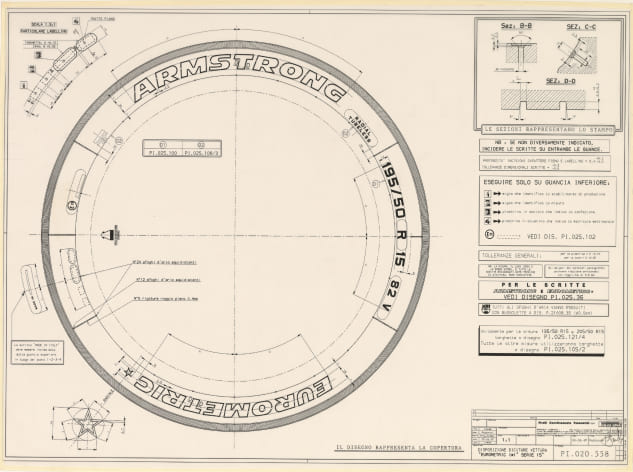
1990
In September, Pirelli puts forward a proposal to the Continental AG company in Hanover for the merging of their tyre-related activities. Negotiations will continue for over a year, until Pirelli decides to withdraw the proposal.
Cover of Copertina di "Fatti e Notizie" no. 2, 1991
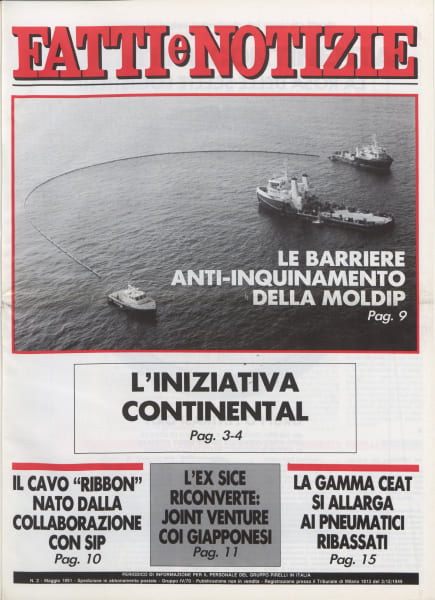
1992
After a demanding reorganisation project that also involves the sale of the Diversified Products Sector's non-strategic activities, with Marco Tronchetti Provera as executive Director and new executive Vice President, the Group begins and consolidates an international recovery phase based on new technologies, new products and, above all, an opening towards emerging markets such as Far East and Africa.
Tronchetti Provera presents the recovery plan, "Fatti e Notizie" no. 2, 1992
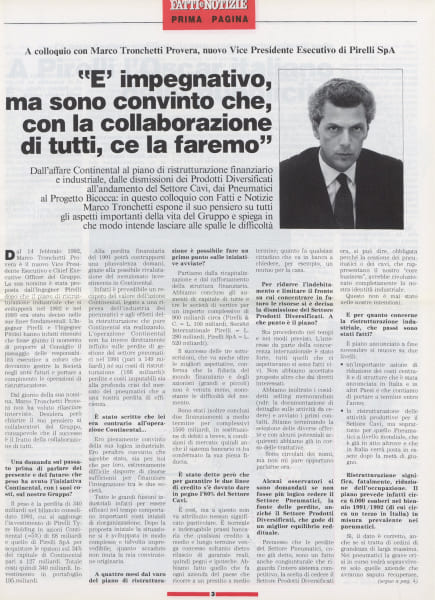
1994
It's the year of the “Power is nothing without control” global communication campaign, which will make international marketing history. Curated by international agency Young & Rubicam, the campaign's testimonial is athlete Carl Lewis, portrayed wearing heels at the starting blocks by photographer Annie Leibovitz.
“Power is nothing without control” advertisement, 1994
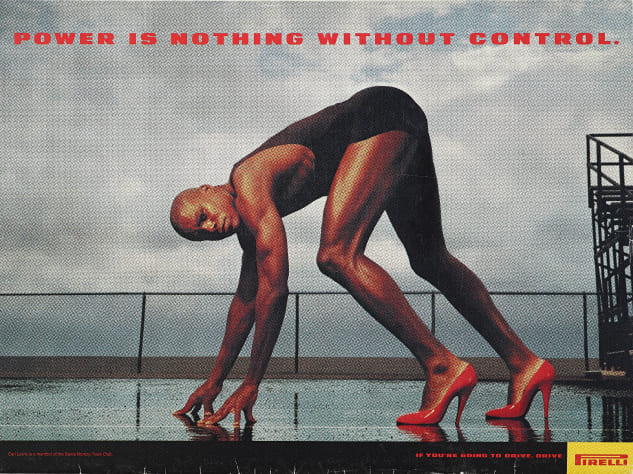
1995
The Pirelli "P Zero" tyres, ultra-lowered for the most prestigious top-of-the-line models, and the "P6000" lower tyres for the mass market, increasingly gain success around the world. A three-year agreement with Bell South is signed, for the supply of Pirelli's new optical amplifiers and wave multipliers. Announcement of the establishment of Corecom follows, a non-profit consortium whose purpose is “research in the field of photonics on behalf of partners”.
Advertisement of P Zero tyres, 1995
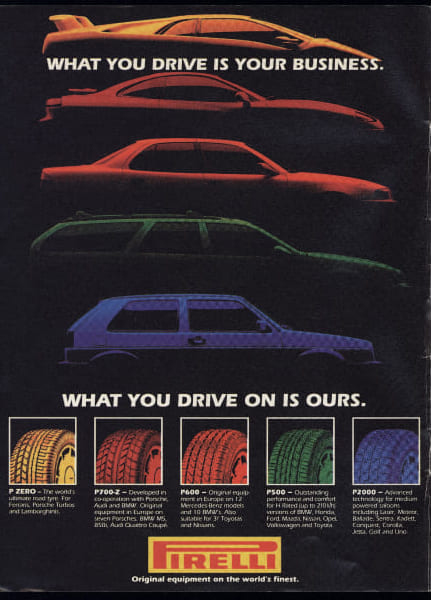
1996
Marco Tronchetti Provera succeeds Leopoldo Pirelli as president of Pirelli S.p.A. and Pirelli invests in the share capital of Inter Milan football club: Pirelli's P Lunga logo appears on the club's black-and-blue shirts. In the same year, Pirelli contributes to the establishment of the Fondazione Franco Parenti, an institution of Milanese theatre.
Marco Tronchetti Provera with Leopoldo Pirelli, 1997
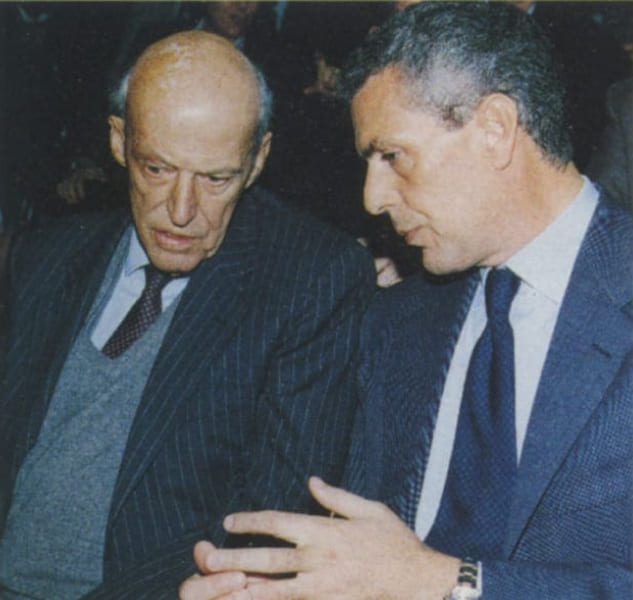
1997
The "Scorpion" tyre is launched. A new plant for the manufacturing of fibre optics is inaugurated in Sorocaba, Brazil: the largest in South America. In Indonesia, a new factory for optical cables to be used in telecommunications comes into operation.
Cover of "World", 1997
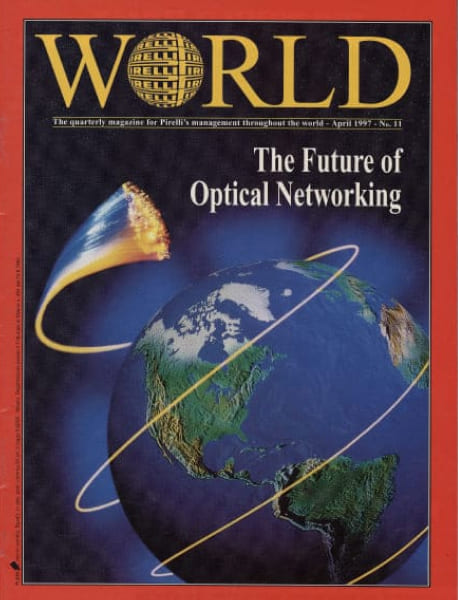
1999
The MIRS (Modular Integrated Robotized System) is implemented at the Milano Bicocca plant, a wholly automated tyre production process patented by Pirelli.
The MIRS production system
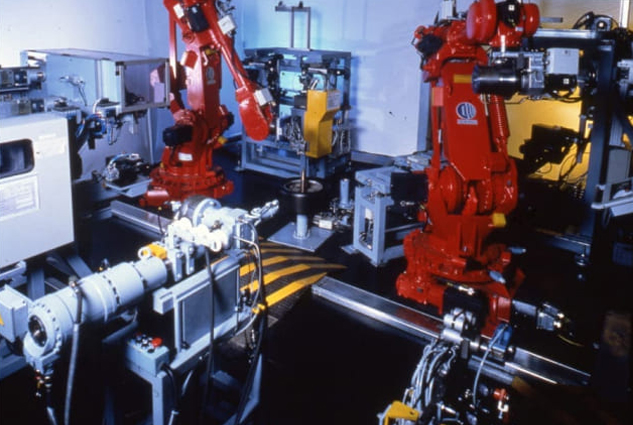
1981
Scandal breaks out over the secretive and subversive P2 Masonic lodge revived by Licio Gelli; François Mitterrand is elected President of the French Republic; Pope John Paul II survives an assassination attempt by Mehmet Ali Ağca; in Italy, a referendum to repeal the abortion law is rejected; the first case of AIDS (Acquired Immune Deficiency Syndrome) is officially reported in the United States.
Papal Assassination Attempt, 1981 (Photo by Keystone/Hulton Archive/Getty Images)
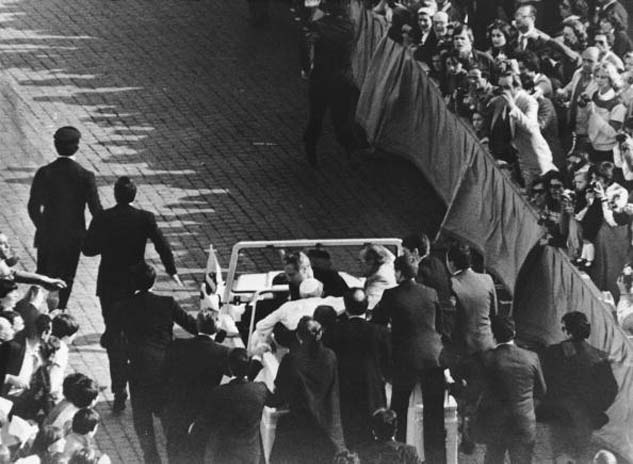
1982
Argentina attempts to occupy the Falkland Islands, but the ensuing war is quickly won by Great Britain; Israel invades Lebanon and occupies its southern region, starting a long period of civil war; the President of the Italian bank Banco Ambrosiano, Roberto Calvi, is found dead under Blackfriars Bridge in London; the Italian football team, managed by Enzo Bearzot, wins the World Cup in Spain; general Carlo Alberto Dalla Chiesa, his wife Emanuela Setti Carraro and personal protection police officer Domenico Russo are murdered by the mafia in Palermo.
FIFA World Cup Final 1982 (Photo by Peter Robinson/EMPICS via Getty Images)
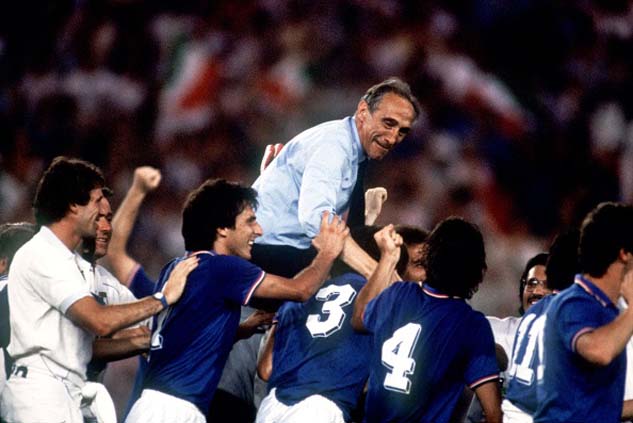
1983
ARPANET, the Advanced Research Projects Agency Network developed by the United States Department of Defense, officially changes protocol and the Internet is born; Bettino Craxi becomes Prime Minister, the first member of the Italian Socialist Party to hold this office; Polish trade unionist and activist Lech Wałęsa is awarded the Nobel Peace Prize; Motorola launches the first mobile phone.
Diagram of a network of potential internet then called ARPANET, 1969 (Photo by Apic/Getty Images)
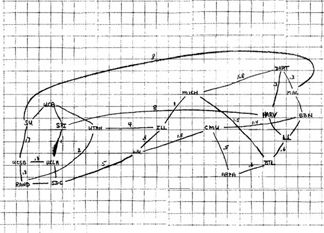
1984
The film Once Upon a Time in America, directed by Sergio Leone with score by Ennio Morricone, is released; death of Enrico Berlinguer, Secretary of the Italian Communist Party; the 23rd Olympic Games are held in Los Angeles, establishing Carl Lewis as a star athlete.
1985
In the Soviet Union, Mikhail Gorbachev is elected General Secretary of the CPSU and restores the period of détente with the United States led by Ronald Reagan – the two leaders meet for the first time in history; five member states of the EEC – Belgium, France, Luxembourg, Germany and the Netherlands – sign the Schengen Agreement, which Italy will also sign in 1990; a Palestinian guerrilla group hijacks the Italian cruise ship Achille Lauro and kills American Leon Klinghoffer; the Italian public debt rises to almost 120,000 billion Italian lira, the highest growth since the post-war period.
1986
The “Maxiprocesso” (“Maxi Trial”) begins in Palermo, a trial for mafia crimes involving over 475 defendants (it will end in 1992, with 19 life sentences and prison sentences amounting to 2,665 years of imprisonment in total); President of the United States Ronald Reagan accuses Libya of supporting Palestinian terrorists and mobilises a fleet off its coast; a nuclear reactor explodes in Chernobyl in the Soviet Union, causing thousands of deaths in the surrounding areas; FIAT acquires Alfa Romeo for 1,050 billion Italian lira from IRI (Istituto per la Ricostruzione Industriale, the Institute for Industrial Reconstruction).
Chernobyl: first pictures after the nuclear disaster, 1986 (Photo by SHONE/GAMMA/Gamma-Rapho via Getty Images)
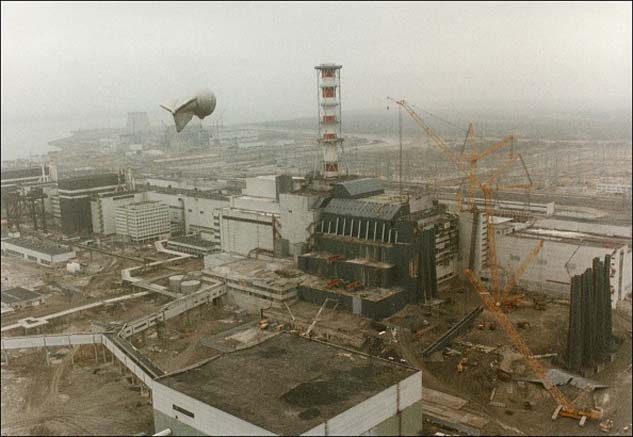
1987
The Soviet Union launches its second space flight with two cosmonauts on board Soyuz TM-2; the Single European Act becomes effective, aimed at fully establishing a single market and leading to the 1992 Maastricht Treaty; Klaus Barbie, the former Gestapo officer known as the “Butcher of Lyon”, goes on trial for crimes against humanity.
1988
Iraq, led by Saddam Hussein, kills approximately 5,000 Kurdish people in the city of Halabja using chemical weapons; the Soviet Union withdraws from Afghanistan after eight years of war; the war between Iran and Iraq ends after nine years and over a million victims; the President of Chile Augusto Pinochet is defeated in a referendum, but retains the post of President of the Republic until 1990; Bernardo Bertolucci’s The Last Emperor wins nine Oscars.
1989
Peaceful protests in Tiananmen Square are suppressed in Beijing; the Berlin Wall, seen as a symbol of the Cold War, is demolished; the United States invades Panama and deposes dictator Manuel Noriega.
1990
Saddam Hussein's Iraqi troops invade Kuwait and, following an ultimatum by the UN, in January 1991 George H. W. Bush begins operation “Desert Storm”, ending the conflict on 28 February; Germany is reunited; the Antitrust Authority is established, to enforce the rules of the competitive marketplace; Giuseppe Tornatore’s Nuovo Cinema Paradiso (Cinema Paradiso) wins the Oscar for Best Foreign Language Film.
American airforce F-15 C fighters flying over a Kuwaiti oilfield which had been torched by retreating Iraqi troops during the Gulf War, 1991 (Photo by MPI/Getty Images)
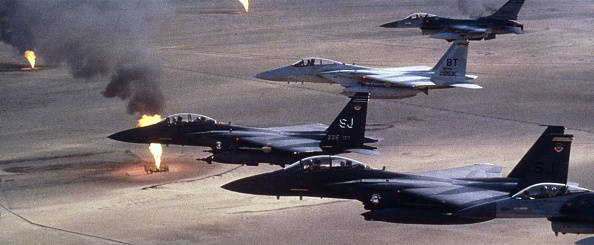
1992
The Maastricht Treaty is signed; in Italy, Mario Chiesa, director of the Pio Albergo Trivulzio retirement home and hospital, is arrested and the “Mani Pulite” (“Clean Hands”) operation, a nationwide judicial investigation into political and business corruption, begins; judge Giovanni Falcone, his wife Francesca Morvillo and three personal protection officers are assassinated in the Capaci bombing, on the motorway near the town of Capaci, Sicily; the privatisation of Italian state-owned companies begins, leading to the transformation of IRI, Eni, INA and Enel into joint-stock companies; judge Paolo Borsellino and five personal protection officers are assassinated in the Via d’Amelio bombing, in Palermo; following the currency crisis, the Italian lira leaves the EMS.
Gabriele Salvatores's Mediterraneo wins the Oscar for the Best Foreign Language Film; following the Velvet Revolution, Czechoslovakia splits into two countries, the Czech Republic and Slovakia; American President George H. W. Bush and Russian President Boris Yeltsin sign the STARTS II treaty for nuclear disarmament; the European Single Market is established, based on four fundamental freedoms: free movement of goods, services, people and capital.
Capaci massacre, 1992 (Photo by Enzo Brai/Mondadori via Getty Images)
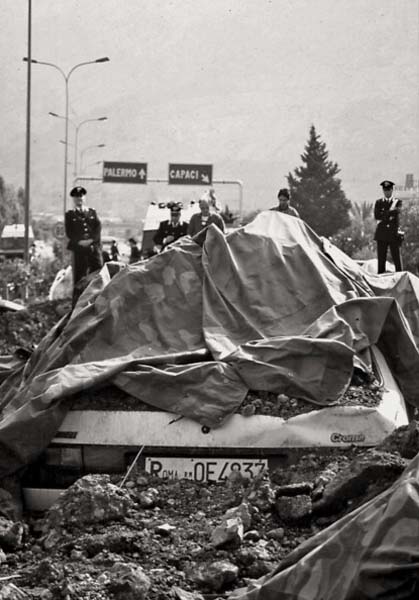
1994
American President Bill Clinton and Russian President Boris Yeltsin sign the Kremlin accords, a new step towards denuclearisation; Silvio Berlusconi officially announces his entry into Italian political life via a video message; the merger of several companies involved in telecommunications (Sip, Italcable, Iritel, Telespazio and Sirm) gives rise to Telecom Italia.
1995
The General Agreement on Tariffs and Trade (GATT) is replaced by the World Trade Organisation (WTO), with Italian politician Renato Ruggiero as director-general; film maker Michelangelo Antonioni receives an Academy Award for Lifetime Achievement; Jacques Chirac is elected President of France; the Dayton Agreement officially brings an end to the war in Bosnia and Herzegovina.
1996
In the United Kingdom, the first case of “mad cow disease”, a progressive, degenerative and fatal neurological disease affecting cattle, is recorded; Dolly the sheep is born, the first mammal to have been successfully cloned; a terrorist attack disrupts the 26th Olympic Games in Atlanta; Ghanaian diplomat Kofi Annan becomes Secretary-General of the United Nations.
1997
The sovereignty over Hong Kong is transferred from the United Kingdom to the People’s Republic of China, officially ending 156 years of British colonial rule; death of Mother Teresa of Calcutta; Italian actor and writer Dario Fo wins the Nobel Prize in Literature; foundation of the Milan public university Università degli Studi di Milano-Bicocca; conflict in former Yugoslavia continues with the Kosovo War; the ECB, European Central Bank, is established in Frankfurt; in Brussels, the European Commission proposes to introduce a common currency in 11 countries, including Italy, starting from 1 January 1999; Italian cyclist Marco Pantani is the first cyclist, after Fausto Coppi, to win the Giro d’Italia and the Tour de France in the same year.
1999
Creation of the euro, the official currency of the European Union member states, which will enter circulation in 2002 – in Italy, one euro is worth 1936.27 Italian lira; in Los Angeles, Roberto Benigni’s La vita è bella (Life is beautiful) wins three Oscars; Israel and the PLO sign the Sharm el-Sheikh Memorandum, which includes recognition of the state of Israel and the right to an independent Palestinian state; Pope John Paul II opens the Holy Door, marking the start of the Jubilee.
Cover of "World", January 1998
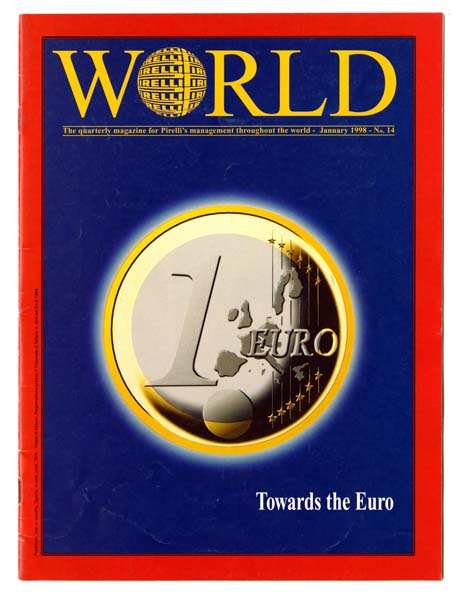
2000
BICC General in Europe, Asia and Africa is integrated into the Group, too, while terrestrial optical systems are sold to Cisco and the optical components to Corning.
Armando Testa, advertisement of Pirelli fibre optics, 1999
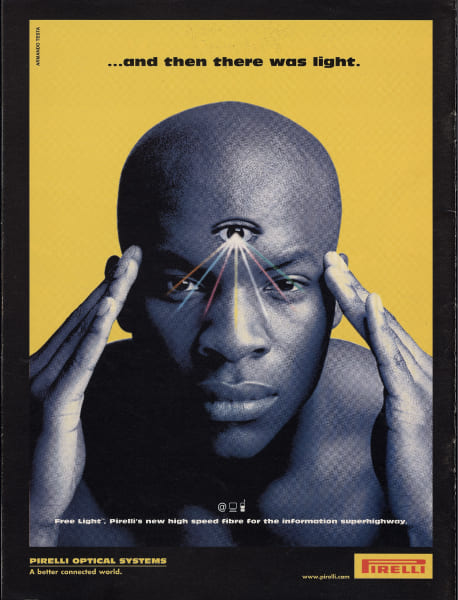
2001
"EUFORI@" appears on the market, the first tyre made with MIRS technology and the new Run Flat technology. Through Olimpia, Pirelli acquires a share in Telecom Italia, becoming its main shareholder until 2007.
EUFORI@ Pirelli tyre, 2001
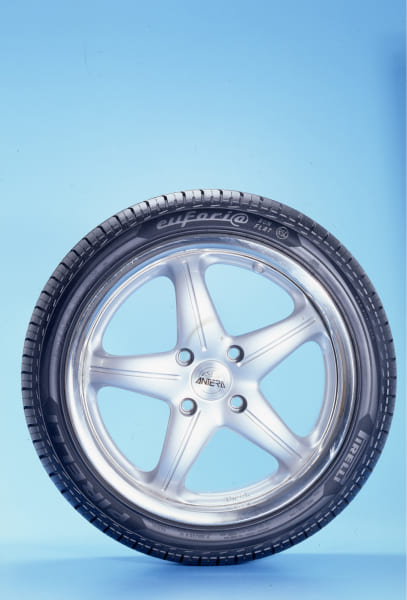
2002
At the pilot plant in Milano Bicocca, the futuristic CCM (Continous Compound Mixing) automated compound room becomes operational. At the same time, the Pirelli Labs are established in Milan, for the development of new technologies for the Group, active in the fields of photonics, fibre optics and materials science. Pirelli & C. Real Estate, the Group's real estate company – today called Prelios – is listed on the stock exchange.
Article on the CCM in "World" no. 32, 2002
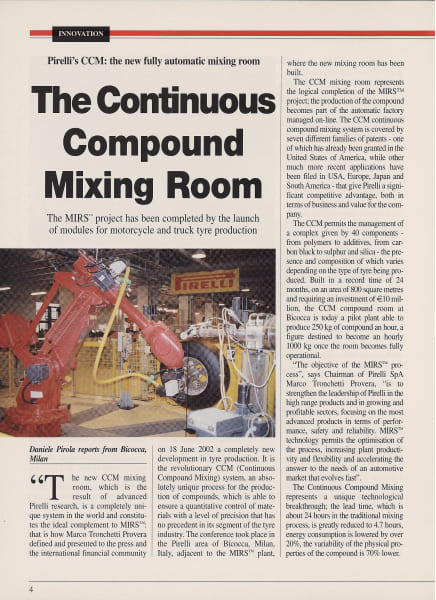
2004
The new activities in the fields of broadband access (Pirelli Broadband Solutions) and photonics are integrated in the Group's core business, together with activities related to the environment and renewable sources of energy (Pirelli Ambiente Holding). The Pirelli HangarBicocca opens, one of the largest spaces dedicated to contemporary art in Europe, of which Pirelli is founding member and promoter.
2005
The Group sells its Cavi e Sistemi Energia e Telecomunicazioni (Cables and Energy and Telecommunication Systems) to Goldman Sachs, and the new company is called Prysmian. The first tyre manufacturing plant in Yanzhou, Shandong province, China, is inaugurated. Two other plants will subsequently open in Jiaozuo and Shenzhou City. In the same year, a plant for the manufacture of metallic cord for tyres begins operations in Romania.
The plant in Yanzhou, China, 2008, photograph by Mirko Cecchi
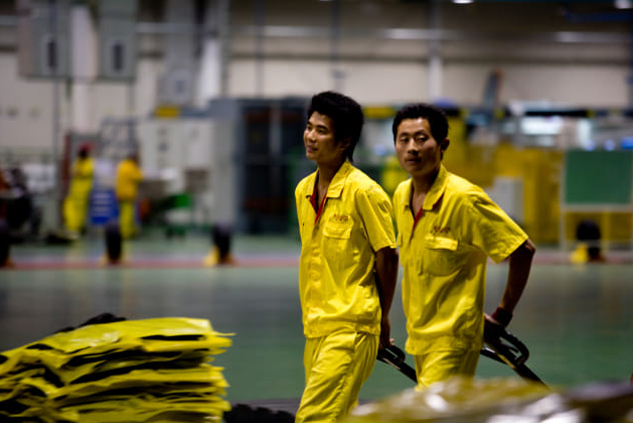
2007
Leopoldo Pirelli passes away on 23 January in Portofino, at the age of 82. The Group aims to strengthen its presence in China: as well as manufacturing tyres for heavy goods vehicles, production for car tyres begins. During the year, the share in Olimpia is sold: the Telecom Italia project is abandoned.
2008
In 2008, the "Nuovo Cinturato", an eco-sustainable tyre with low rolling resistance, is launched. The Group's product expansion continues. Pirelli and Russian Technology sign an agreement for a joint venture aimed at manufacturing tyres in Russia. At the wish of the Pirelli family and with the aim of enhancing and sharing its business culture, the Pirelli Foundation is established.
Headquarters of the Pirelli Foundation
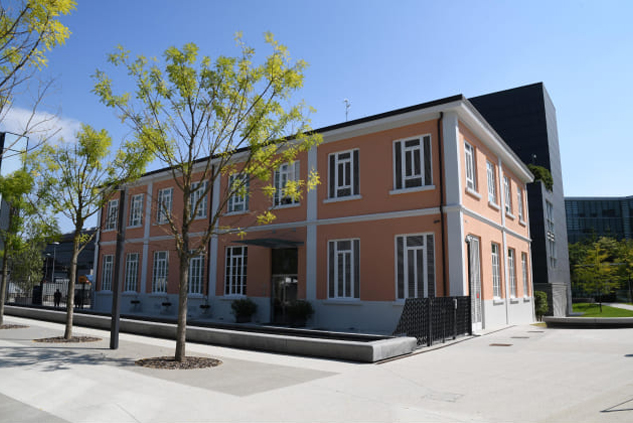
2010
Pirelli refocuses its activities by centring its core business on tyres, becoming a ‘pure tyre company’. The process ends the same year, through the sale of Pirelli Broadband Solutions and the separation of Pirelli Real Estate from the Group.
2011
Pirelli goes back to Formula 1 as the exclusive supplier for all teams. A first three-year agreement (2001-2003) is renewed for the following three years, and then further extended. In the same year, Pirelli sells its shares in Pirelli & C. Ambiente S.p.A. and Pirelli & C. Eco Technology S.p.A. On 19 March, President of the Republic Giorgio Napolitano visits the industrial hub of Settimo Torinese. The 2011 annual report, entitled “ABC”, is enhanced with illustrations by artist Stefan Glerum.
Cover of "Fatti e Notizie" no. 393, 2010
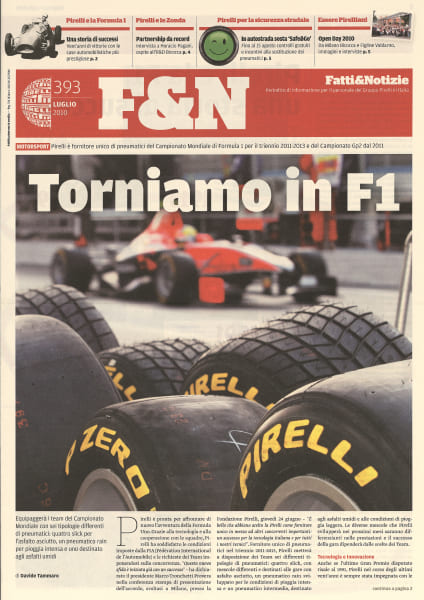
2012
The new factory in Silao, Mexico, is inaugurated. In the same year, the joint venture between Pirelli and the Indonesian Group Astra Otopart is announced, and it will lead to the construction of a plant for the manufacturing of motorcycle tyres in South-East Asia. The "Cinturato P7 Blue" is developed, an eco-sustainable tyre characterised by low rolling resistance, one of the first to be awarded top marks for energy efficiency and safety.
Cinturato P7 Blue tyres, 2012
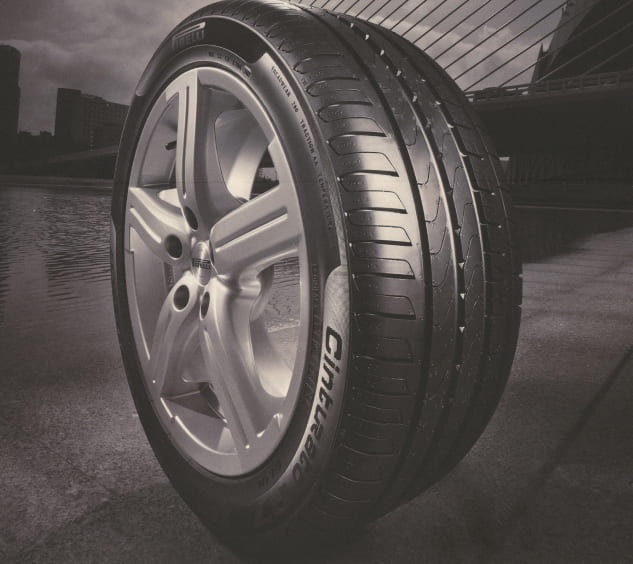
2015
Sale of Pirelli's majority stake in Camfin to the Chinese company ChemChina. Pirelli attends the 2015 Milan Expo, sponsoring the emblematic “Tree of Life”.
The Tree of Life at the 2015 Milan Expo
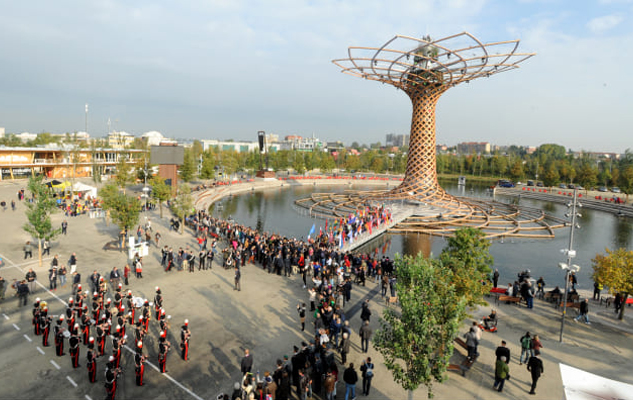
2016
The opening of a second factory in the ‘Puerto Interior’ industrial hub of Silao, Mexico, is announced. The 2013 Pirelli Annual Report, “Spinning the Wheel”, wins the platinum medal in the competition held by “Graphis”, magazine that assesses the best production in the field of design worldwide.
The factory in Silao, Mexico, 2016
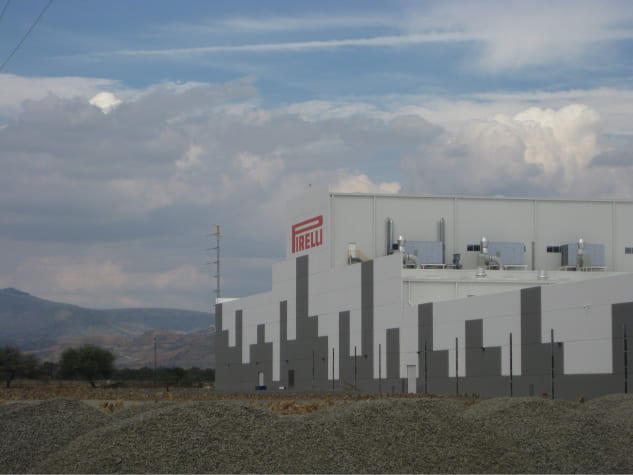
2017
In September, the Orchestra da Camera Italiana chamber orchestra, conducted by maestro Salvatore Accardo, performs Il canto della fabbrica (Factory song), a concert inspired by the sounds and rhythms of industry 4.0, in the Settimo Torinese industrial hub's Packaging Department, in front of an audience of 1,000 people. Pirelli sponsors the Emirates New Zealand team, winner of the 35th America's Cup. In 2018, in view of the 2021 America's Cup, partnership with the Luna Rossa Prada team is established.
The concert conducted by maestro Accardo in the plant at Settimo Torinese, 2017
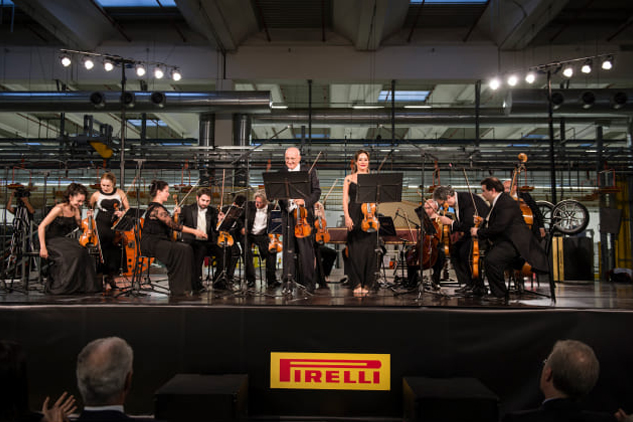
2019
90 years after the visit by the Prince of Wales at Burton-on-Trent, Prince Charles visits the English plant in Carlisle, on the occasion of its 50th anniversary.
His Royal Highness the Prince of Wales visits the Pirelli factory in Carlisle
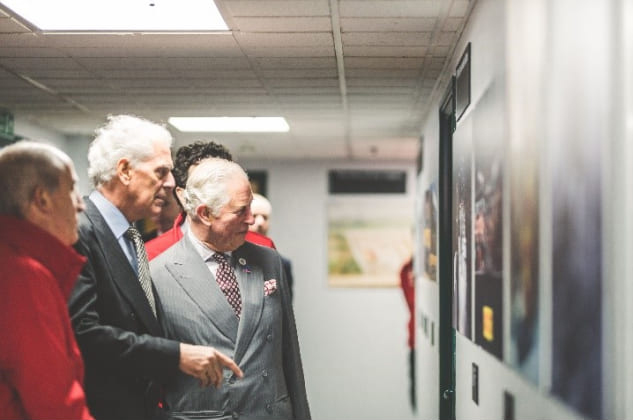
2020
Pirelli is recognised as the ESG Sector Leader in the FTSE4Good Index Series for its commitment to environmental, social and governance issues, ranking at the top of the Tyre and Consumer Goods sector, and also achieves gold in the SAM Sustainability Yearbook 2020, published by S&P Global.
2021
Pirelli is the first company in the world to manufacture tyres that employ FSC-certified natural rubber and rayon, like the "P Zero" for BMW, with which it also implemented a project related to a sustainable natural rubber supply chain in collaboration with BirdLife International, with the aim of safeguarding the eco-system, the life of communities and of animal species in danger of extinction. After the New Zealand team's victory in the 2021 America's Cup, Luna Rossa's participation in the 2024 edition of the America's Cup is announced.
2022
Pirelli celebrates its 150th anniversary. Since its foundation, it has become and remains one of the world's leading manufacturers of top-of-the-range tyres, and its sustainable management model is inspired by the highest, internationally recognised standards of responsibility.
The logo to celebrate Pirelli's 150th anniversary
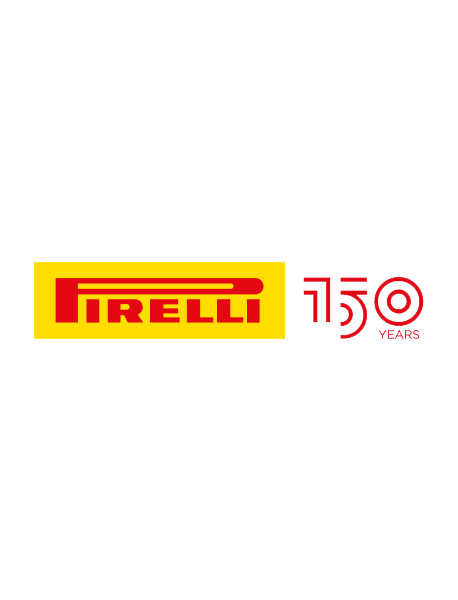
2000
The Italian Parliament approves the school reform that will restructure education into three cycles of study; FIAT announces an alliance with General Motors, the first step towards a closer cooperation between the two automotive giants; Vladimir Putin is elected President of Russia.
2001
G8 protests in Genoa result in violent clashes with the police and a great scandal of abuse of power by the police on civilians; on 11 September 2001, two hijacked airplanes crash into the Twin Towers of the World Trade Center in New York, destroying them and leaving thousands dead and wounded.
Smoke pours from the twin towers of the World Trade Center after terrorist attack, 2001 (Photo by Robert Giroux/Getty Images)
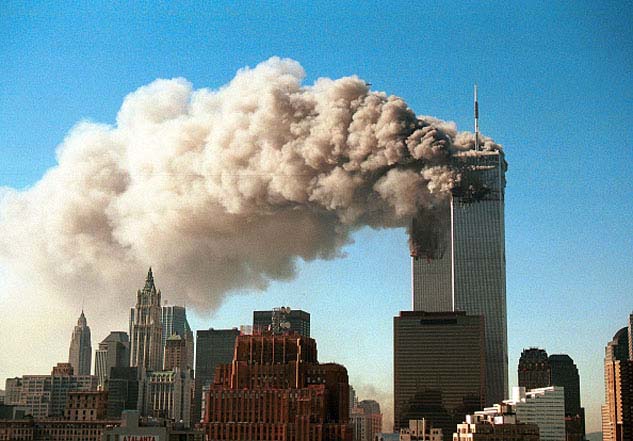
2002
Argentina defaults on its debt and declares bankruptcy; a light aircraft crashes into the 26th and 27th floors of the Pirelli Tower in Milan, killing the pilot and two employees of the Regione Lombardia government authority; Riccardo Giacconi wins the Nobel Prize in Physics, “for pioneering contributions to astrophysics, which have led to the discovery of cosmic X-ray sources”.
2003
The Beijing government officially announces an epidemic of Severe Acute Respiratory Syndrome (SARS); the United States invades Iraq, accusing Saddam Hussein’s regime of possessing weapons of mass destruction; in Nasiriyah, Iraq, an attack on the Italian army causes 19 deaths.
2004
Mark Zuckerberg launches Facebook, the first social networking site; a series of coordinated attacks on Madrid’s local train system leaves 191 dead and 2,057 injured; a violent tsunami devastates the coasts of Asia, causing billions in damages and over 200,000 deaths.
2005
Hurricane Katrina strikes the south-eastern coast of the United States and wreaks havoc on New Orleans; 141 countries, except the United States, adhere to the “Kyoto Protocol” on reducing the emission of greenhouse gases; death of John Paul II, after 27 years as pope; he is succeeded by German Cardinal Joseph Ratzinger, who takes the name of Benedict XVI; the 25 heads of state of the European Union sign the new European Union Constitution in Rome.
2006
The 20th Olympic Winter Games open in Turin; the Italian national team wins the World Cup in Germany; the social networking site Twitter is launched; Saddam Hussein is sentenced to death and executed for crimes against humanity.
2007
Apple presents the first version of the iPhone, ushering in the mass adoption of smartphones; Doris Lessing is awarded the Nobel Prize in Literature as “that epicist of the female experience, who with scepticism, fire and visionary power has subjected a divided civilisation to scrutiny”; a financial crisis marked by a lack of liquidity and insolvency by both banks and countries, and by scarcity of credit for companies, erupts.
Wall Street Reels As Major Financial Companies Face Crisis, 2008 (Photo by Spencer Platt/Getty Images)
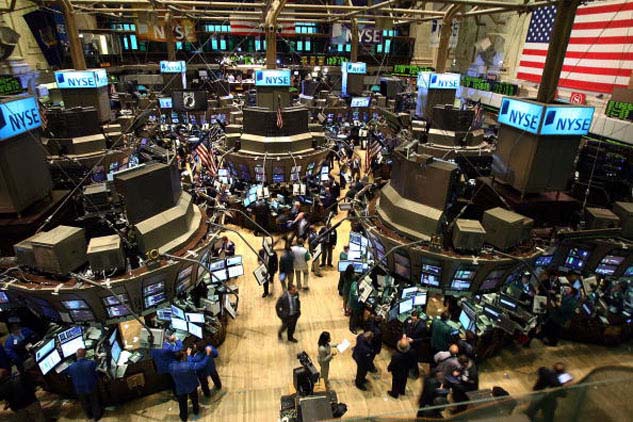
2008
The “Balkan crisis” begins, with Kosovo declaring its independence from Serbia; Democratic senator Barack Obama is elected, becoming the first African-American President of the United States; a military crisis erupts between Russia and Georgia, caused by tensions over the status of Georgian autonomous territories.
2009
Following the peace conference at Sharm el-Sheikh in Egypt, Israel withdraws from the Gaza Strip; a violent earthquake hits Abruzzo, causing over 310 deaths.
2010
A disastrous earthquake strikes the island of Haiti, leaving over 3 million dead; José Mourinho’s Inter-Milan football team completes a “treble” by winning the Champion’s League, as well as the Italian league championship and the Coppa Italia; the economic and financial crisis hits Greece and European Union countries adopt emergency recovery measures to deal with it.
UEFA Champions League final, 2010
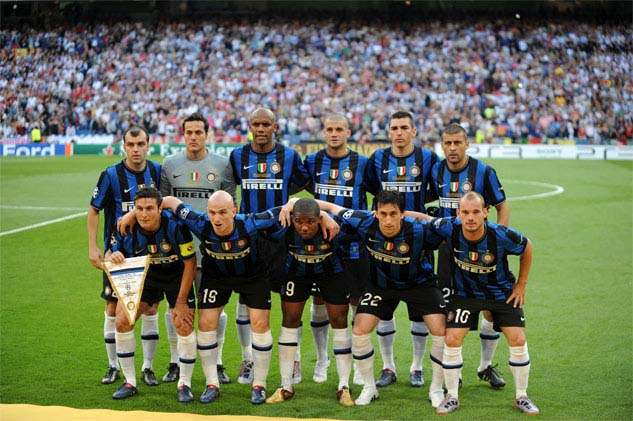
2011
In Japan, a dreadful tsunami caused by an earthquake leads to the Fukushima nuclear disaster; Syrian civil war breaks out against the government of Bashar al-Assad and, in 2019, it will lead to the fall of the Islamic State’s last stronghold after four years of dominance over Syria; the American government reports the death of Osama Bin Laden, who masterminded the attack on the Twin Towers on 11 September 2001; Pirelli returns to Formula 1 as the sole tyre supplier for all teams at the Australian Grand Prix.
Pirelli returns to Formula 1 , 2011
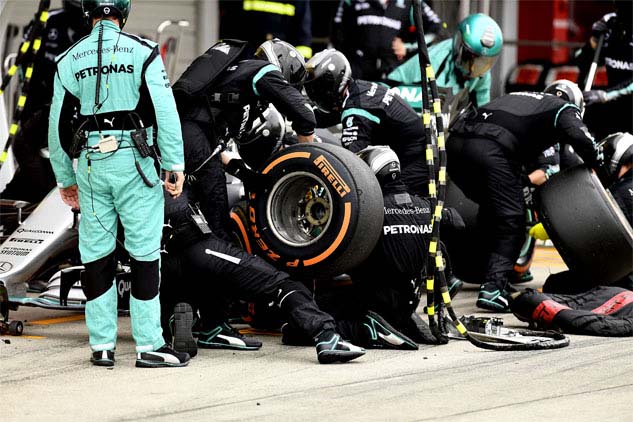
2012
The Italian cruise ship Costa Concordia is shipwrecked off the island of Giglio, Tuscany, leaving 32 dead and 64 injured; two earthquakes strike the Po Valley, causing 27 deaths; following experiments conducted in the LHC accelerator, CERN scientists confirm the existence of the Higgs boson; death of Rita Levi Montalcini (neurologist, academic and Senator for Life in Italy, as well as Nobel laureate in Medicine in 1987).
Higgs Boson Illustration (Illustration by Tobias Roetsch/Future Publishing via Getty Images)
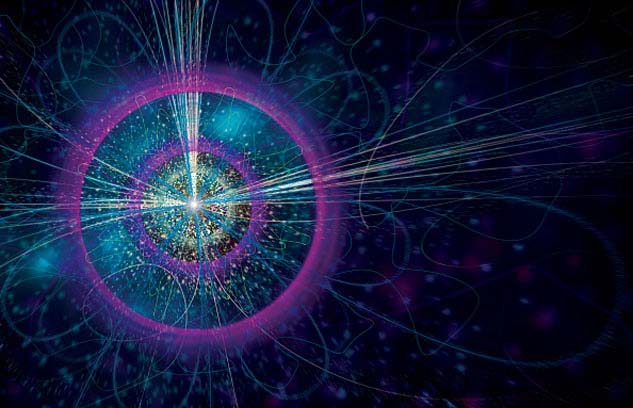
2014
Russia occupies Crimea and the Russia-Ukrainian conflict begins; La Grande Bellezza (The great beauty) by Paolo Sorrentino wins the Oscar for Best Foreign Language Film; Abu Bakr al-Baghdadi proclaims the foundation of the Islamic State of Iraq and Syria; Samantha Cristoforetti is the first Italian woman astronaut to enter the International Space Station (ISS).
Expedition 42 Starts Mission To ISS, 2014 (Photo by Aubrey Gemignani/NASA via Getty Images)
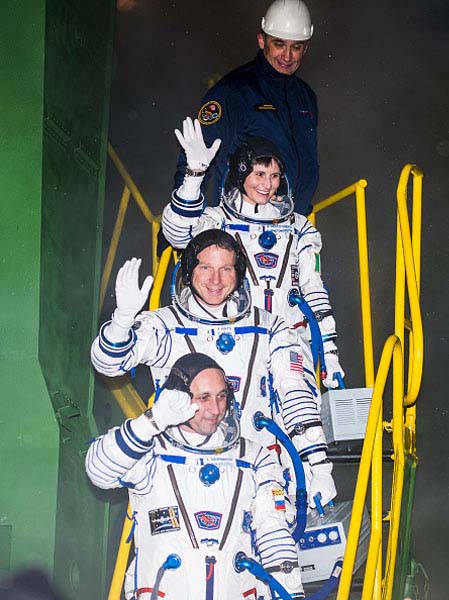
2015
In Paris, a terrorist attack on the offices of satirical newspaper "Charlie Hebdo" leaves 12 dead; Milan hosts the 2015 Expo Milano at the Rho Exhibition Centre; Pope Francis issues the encyclical Laudato si’ (Praise be) on integral ecology and launches the 30th Universal Jubilee of the Catholic Church.
Expo Milano 2015
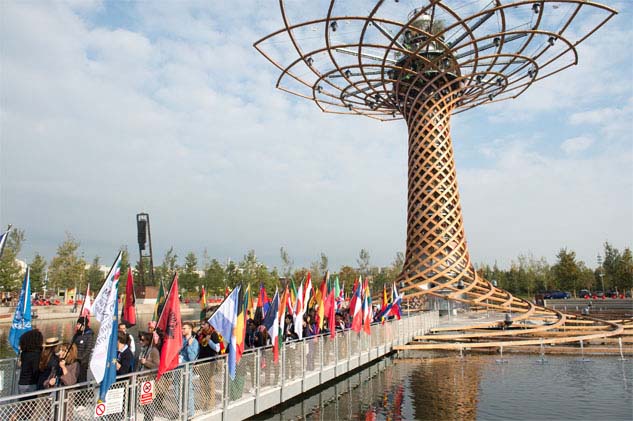
2016
In a consultative referendum, the people of the United Kingdom vote to leave the European Union: it's “Brexit”; an earthquake with its epicentre at Accumoli and Arquata del Tronto wreaks havoc in Central Italy; Republican Donald Trump is elected 45th President of the United States.
2017
British people vote in favour of Brexit, i.e. for the United Kingdom to leave the European Union; Emmanuel Macron is elected President of France; the Living Will law is approved in Italy; a series of terrorist attacks spread terror in Manchester, London, Barcelona and Egypt.
2018
The longest lunar eclipse of the century takes place; in Italy, due to a structural failure, the Morandi bridge in Genoa collapses, causing 43 deaths; young Swedish activist Greta Thunberg launches the “Fridays for Future” movement, thanks to which she will be nominated Person of the Year by Time Magazine in 2019, the youngest person to be awarded the title; the "Gilets Jaunes" movement engenders a series of violent protests against the rise in fuel price and cost of living in France.
2019
A fire breaks out in Notre-Dame Cathedral in Paris, causing extensive damage to the building; the International Olympic Committee chooses the Italian candidate sites Milan and Cortina d'Ampezzo for the 2026 Winter Olympics; the Nobel Prize in Economics is awarded to Abhijit Banerjee, Esther Duflo and Michael Kremer for their experimental approach to reducing global poverty.
2020
Brexit becomes effective; the whole world is struck by a pandemic caused by Coronavirus (COVID-19); the killing of George Floyd in Minneapolis triggers the Black Lives Matter protest movement across the United States; the European Council approves the Recovery Fund in support of economic revival.
EU Leaders Summit in Brussels, 2020 (Photo by Dursun Aydemir/Anadolu Agency via Getty Images)
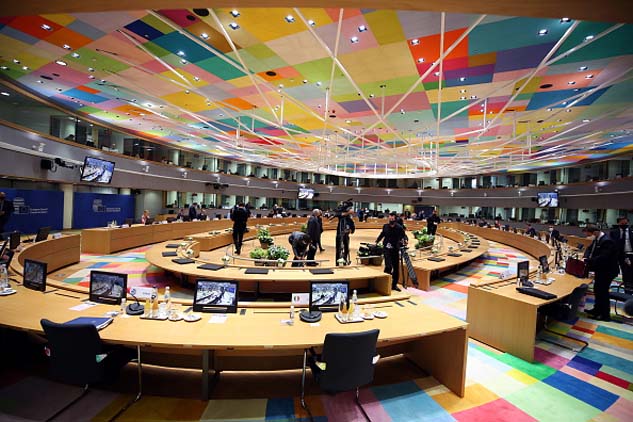
2021
Joe Biden, who was Barack Obama's vice president, is elected 46th President of the United States; Pope Francis meets Grand Ayatollah Ali al-Sistani in Najaf, Iraq, the very first meeting between a Pope and a Grand Ayatollah; the Ever Given, one of the world’s largest container ships, runs aground in the Suez Canal, blocking it and holding up more than 280 ships for six days.
Engineers and technicians assemble the James Webb Space Telescope, 2018 (Photo by Alex Wong/Getty Images)
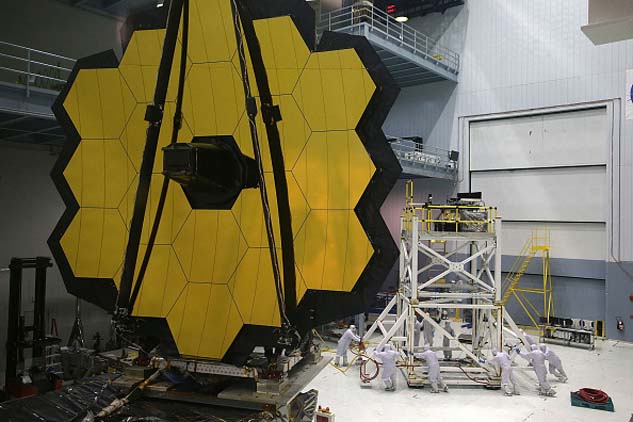
2022
In Italy, Sergio Mattarella's term as President of the Republic comes to an end; Italy celebrates the 570th anniversary of Leonardo da Vinci's birth, and the 20th anniversary of the introduction of the euro; India celebrates 75 years of independence, and Brazil its 200 years of independence; the USSR is 100 years old.
Advertising for Pirelli erasers, 1920s
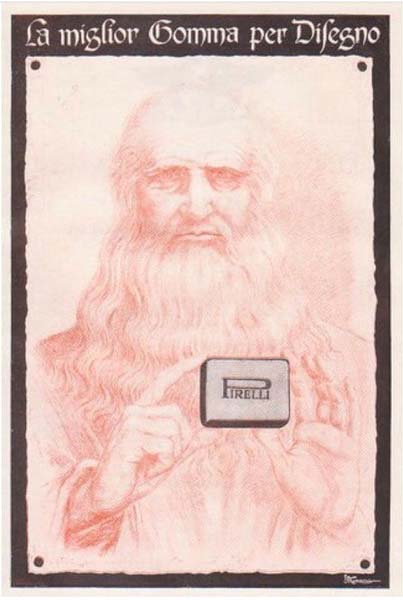
01
nil
 home
home
